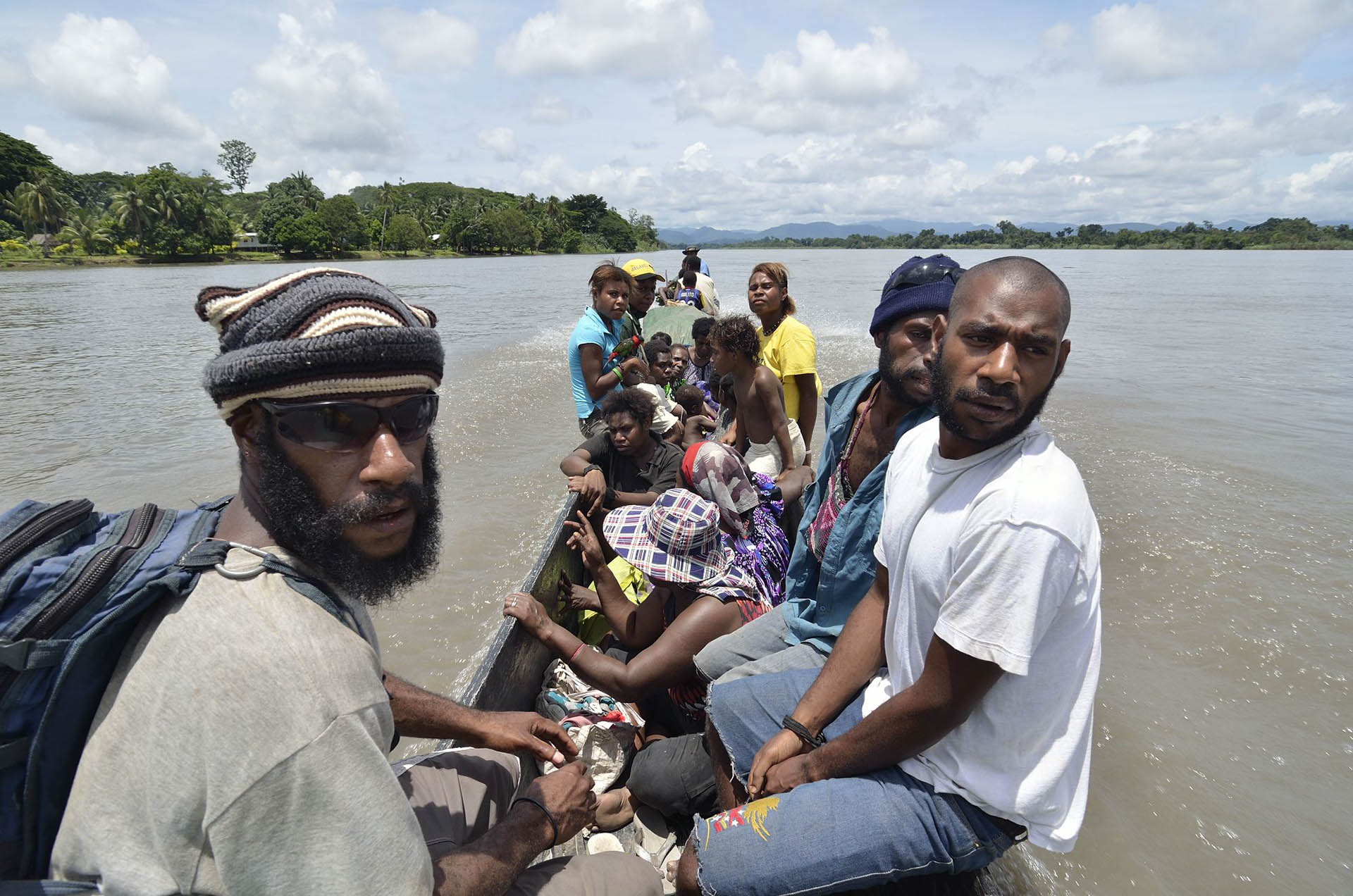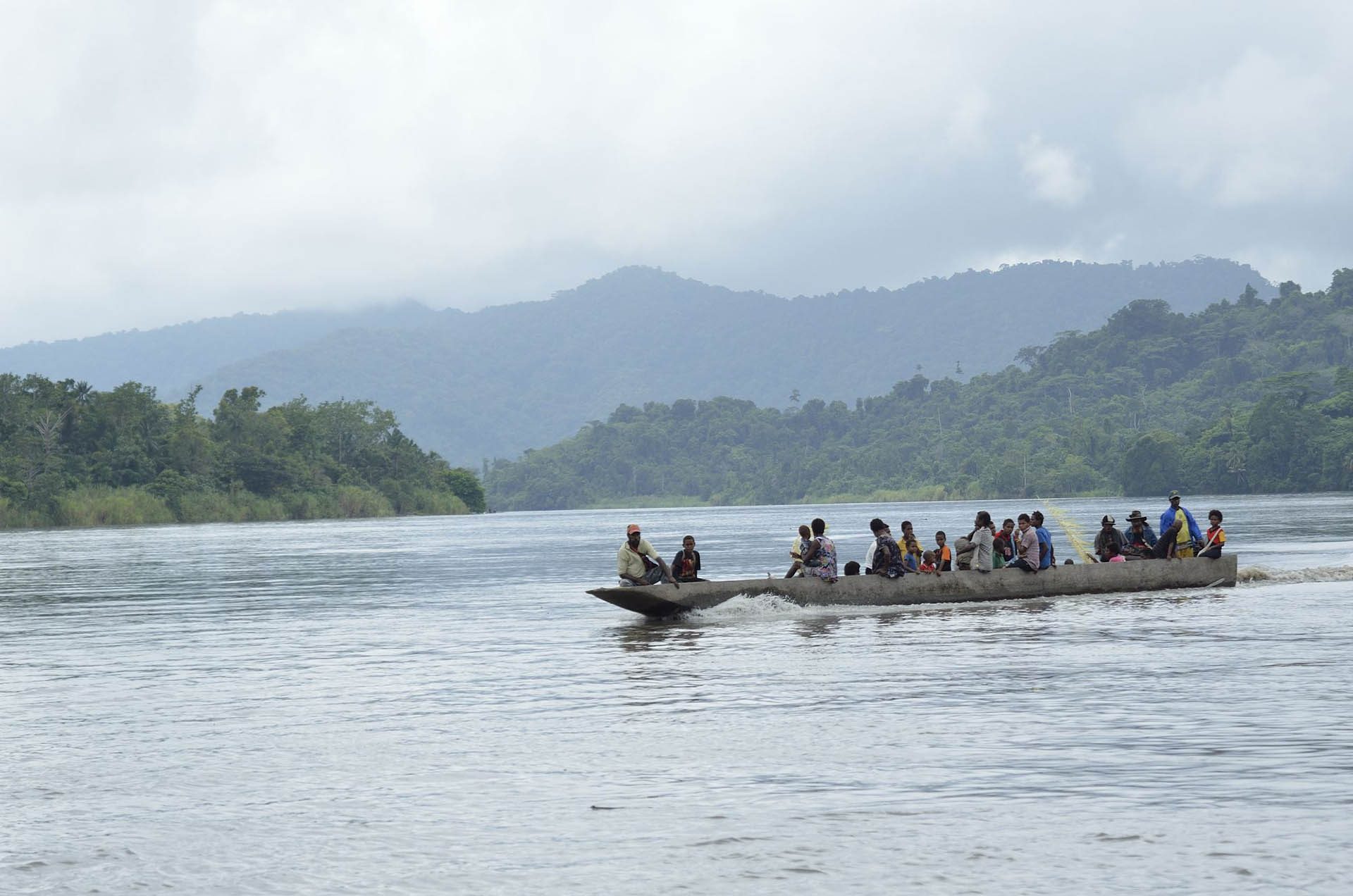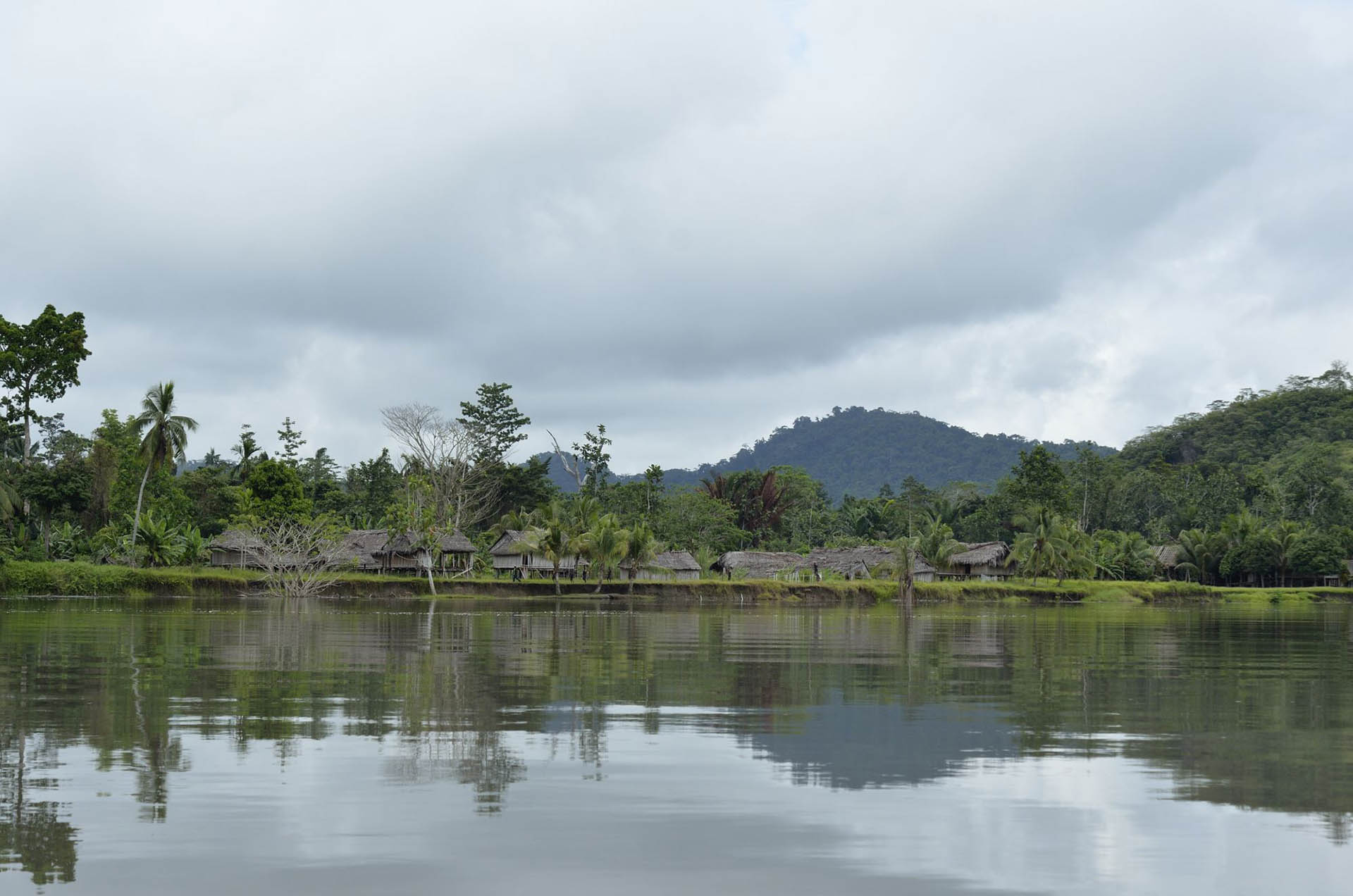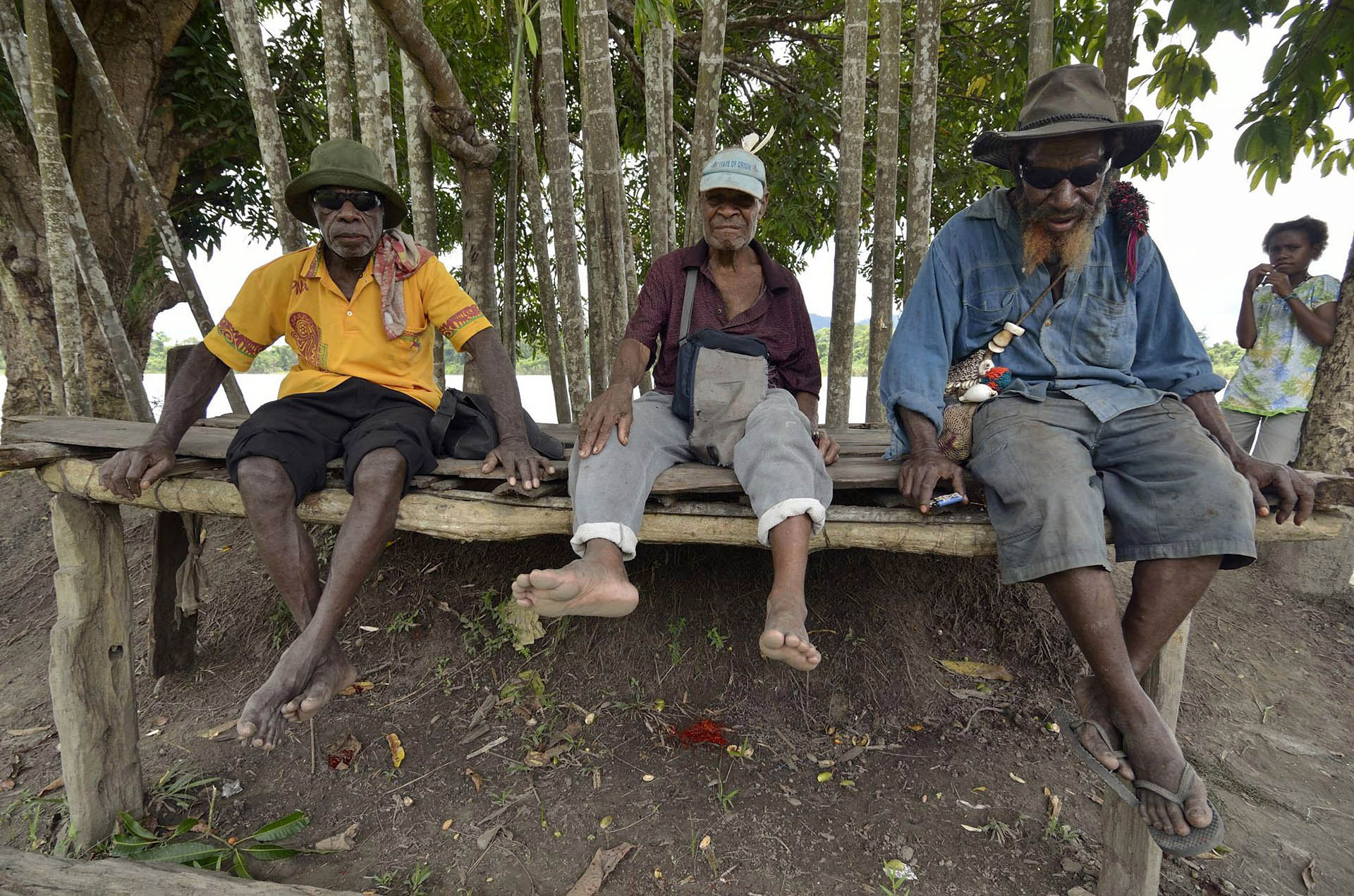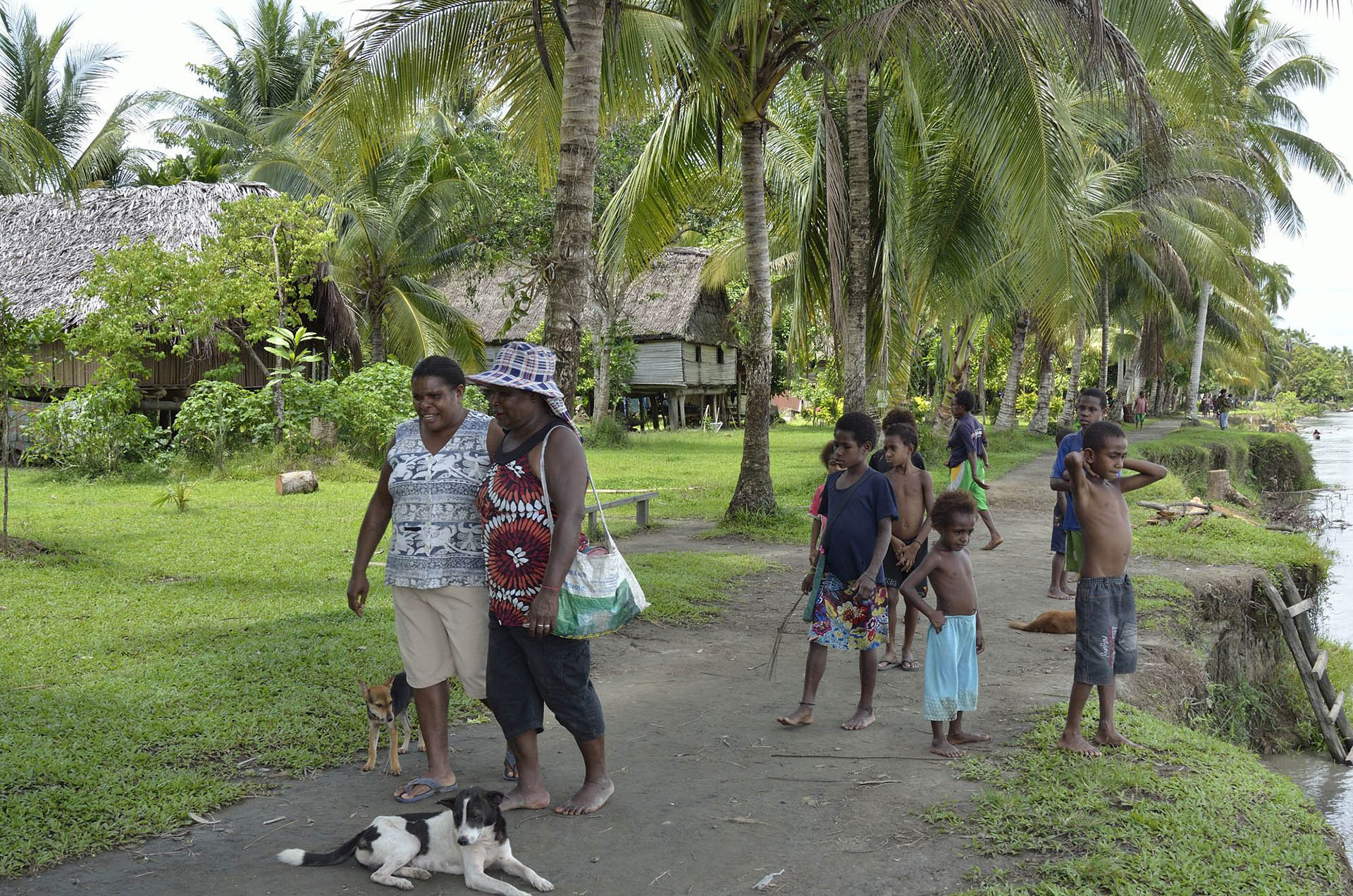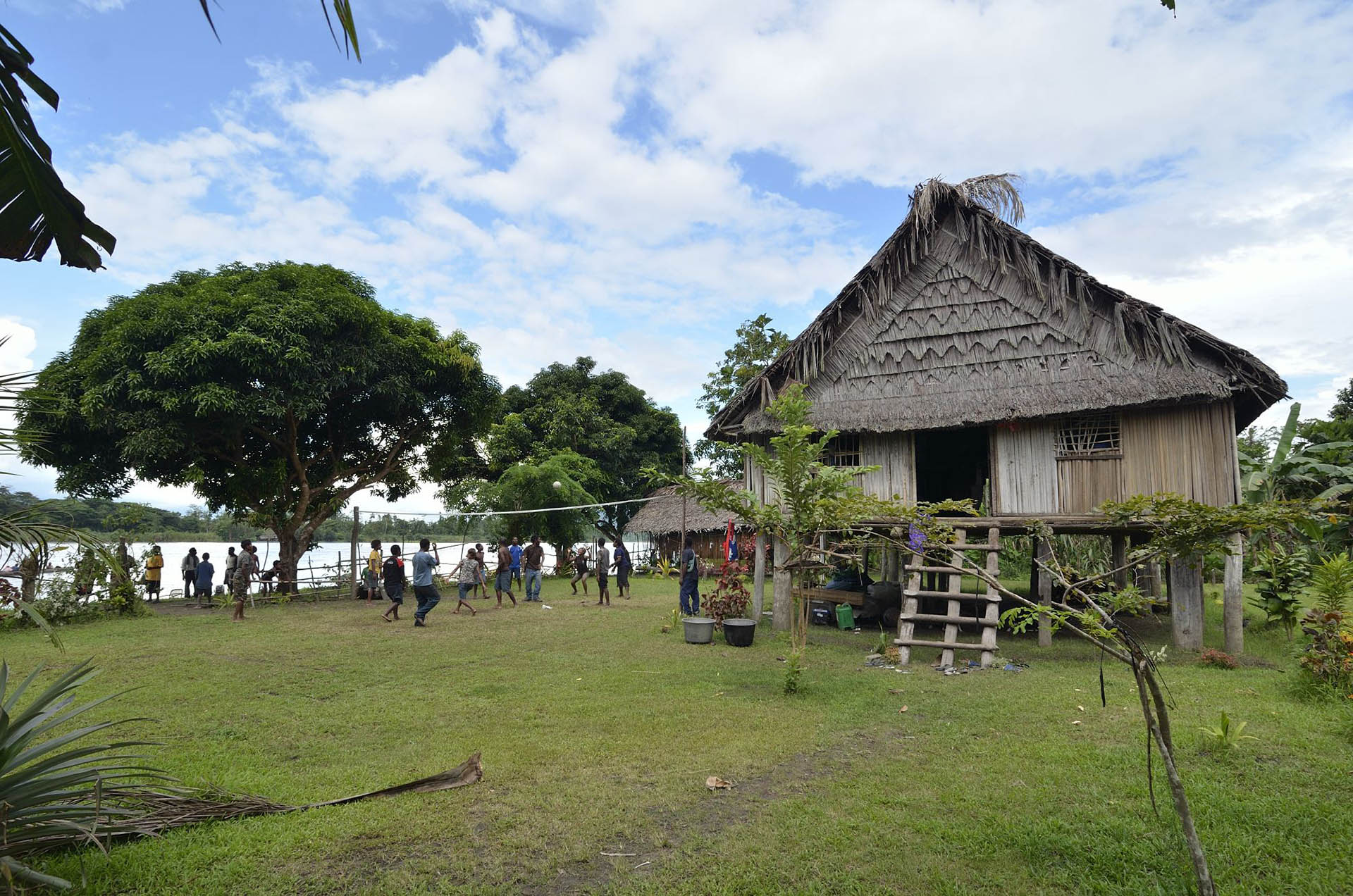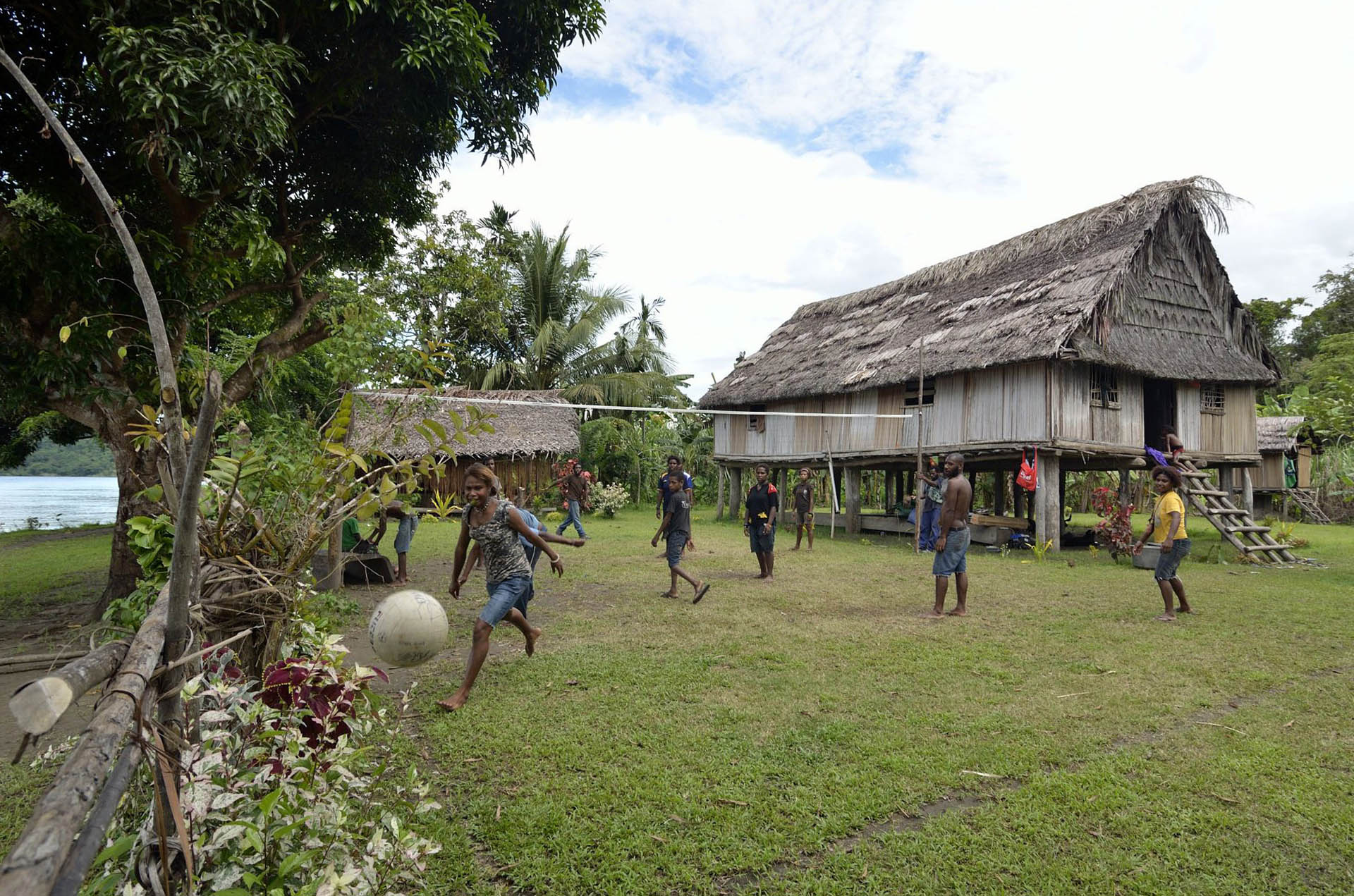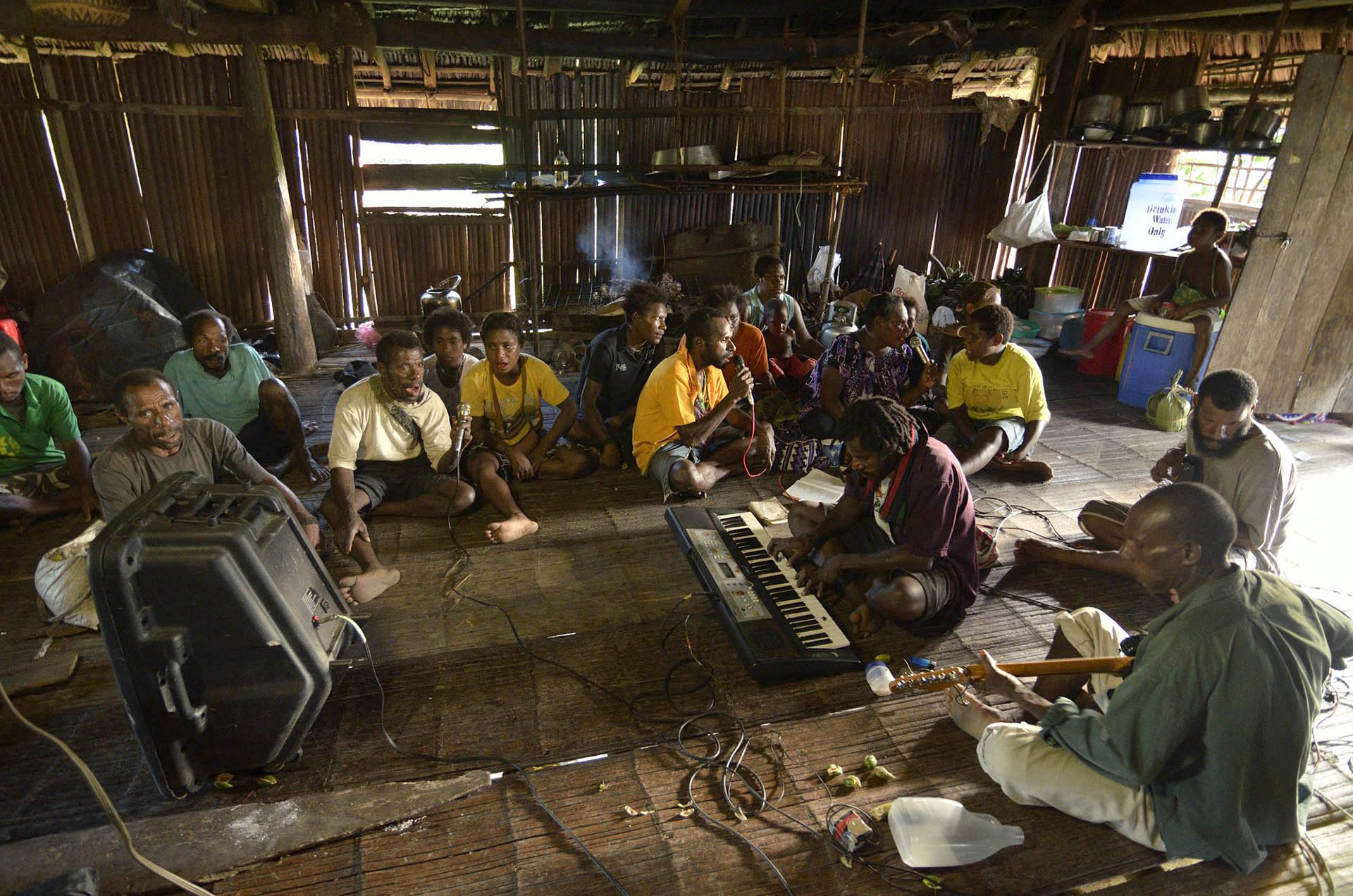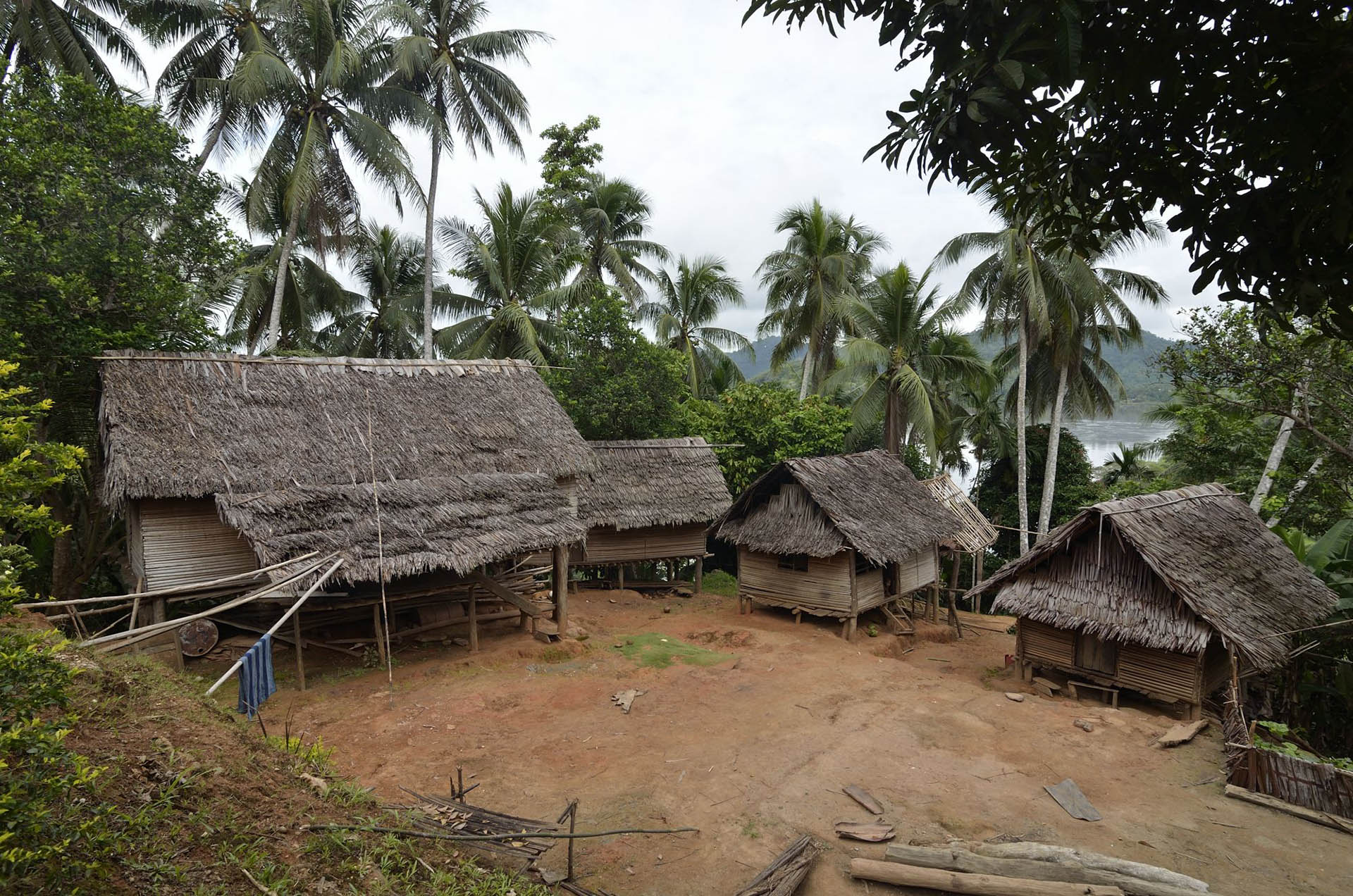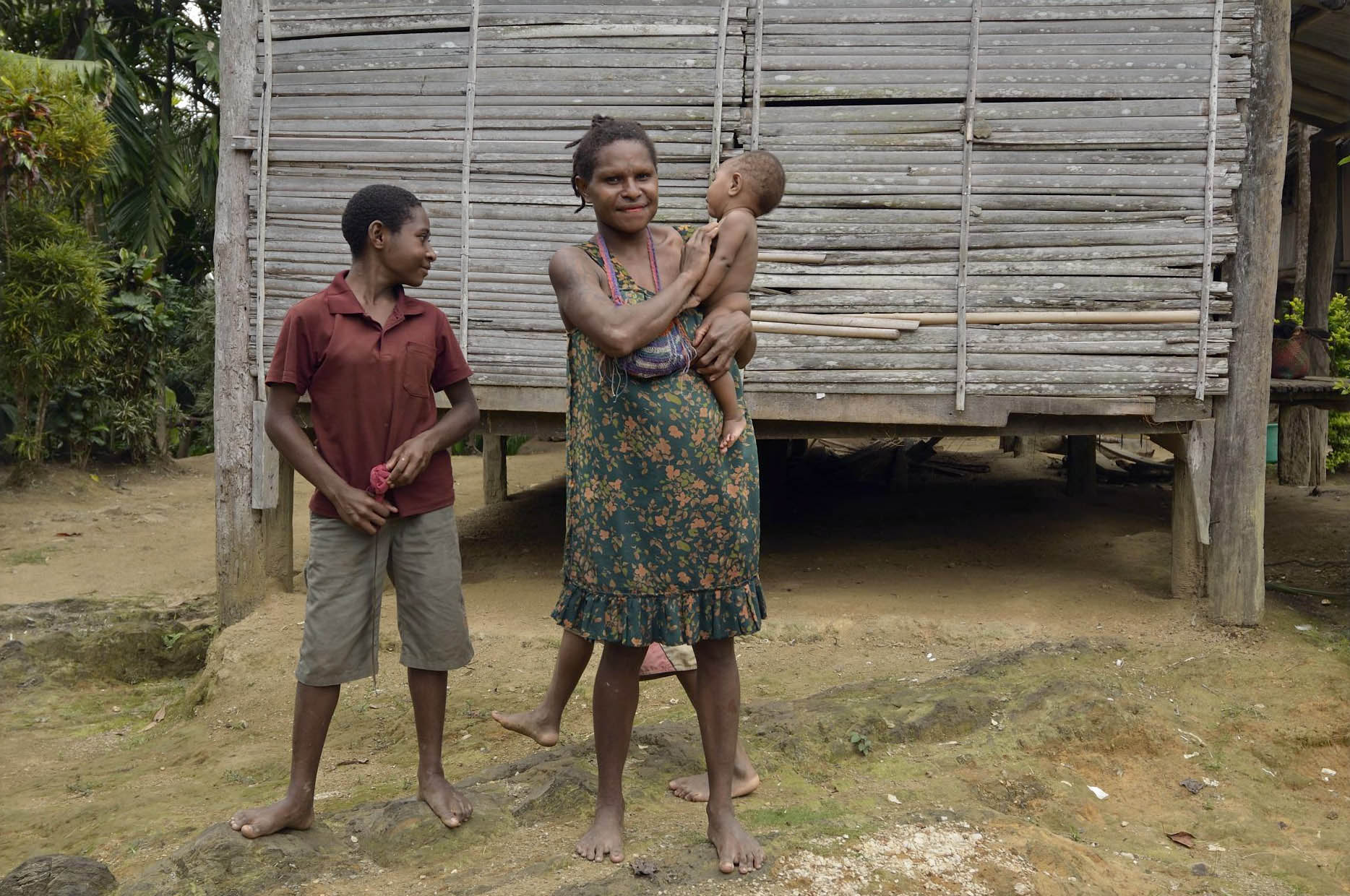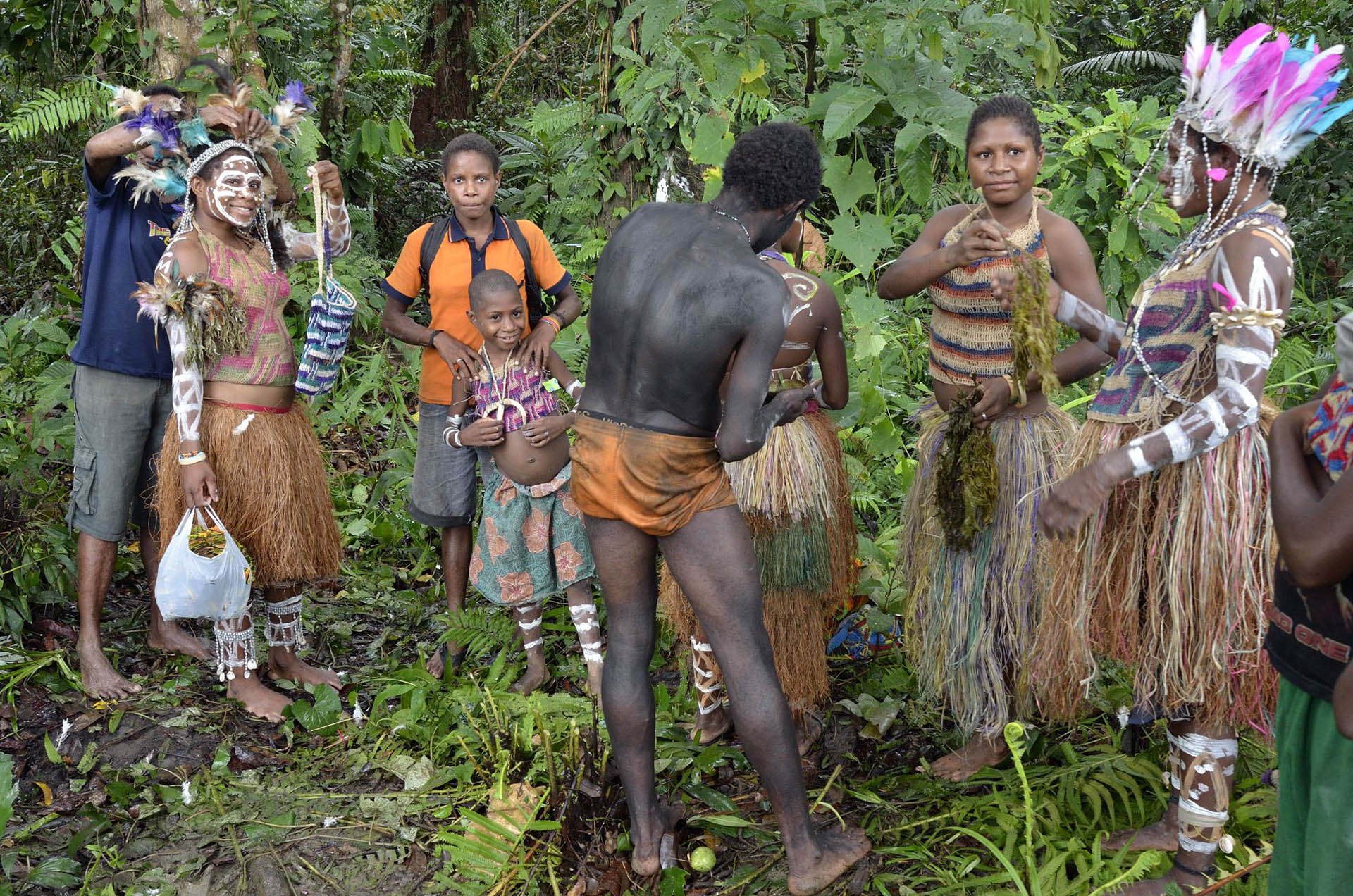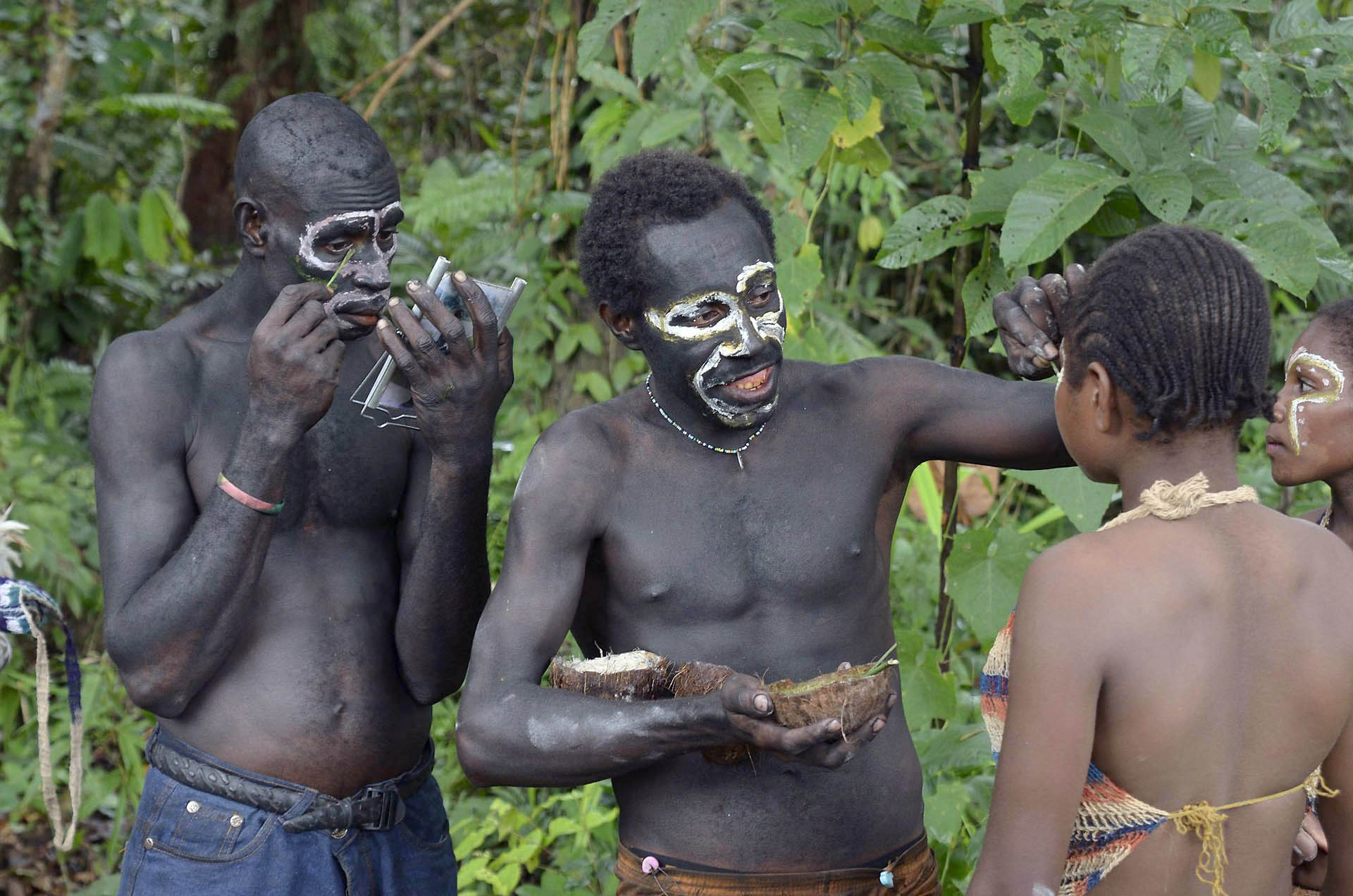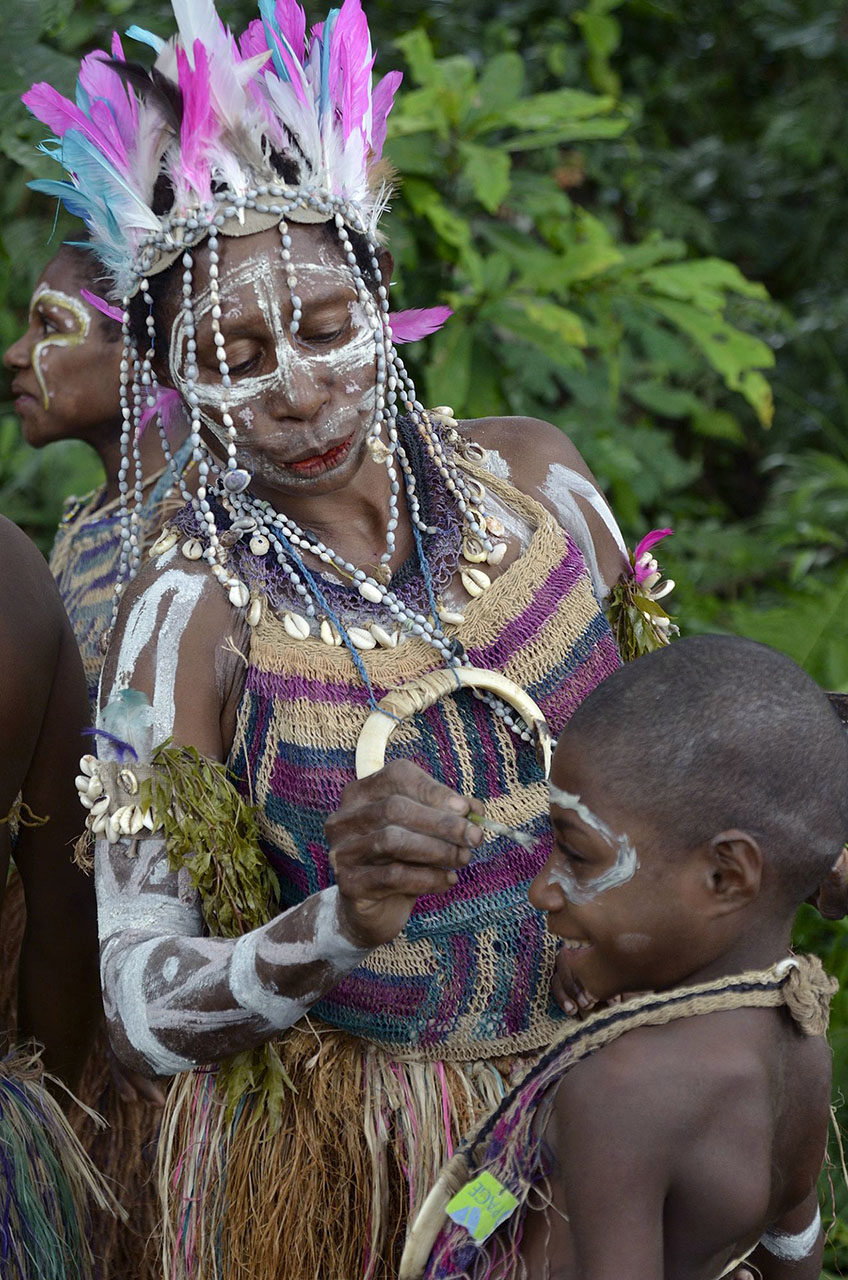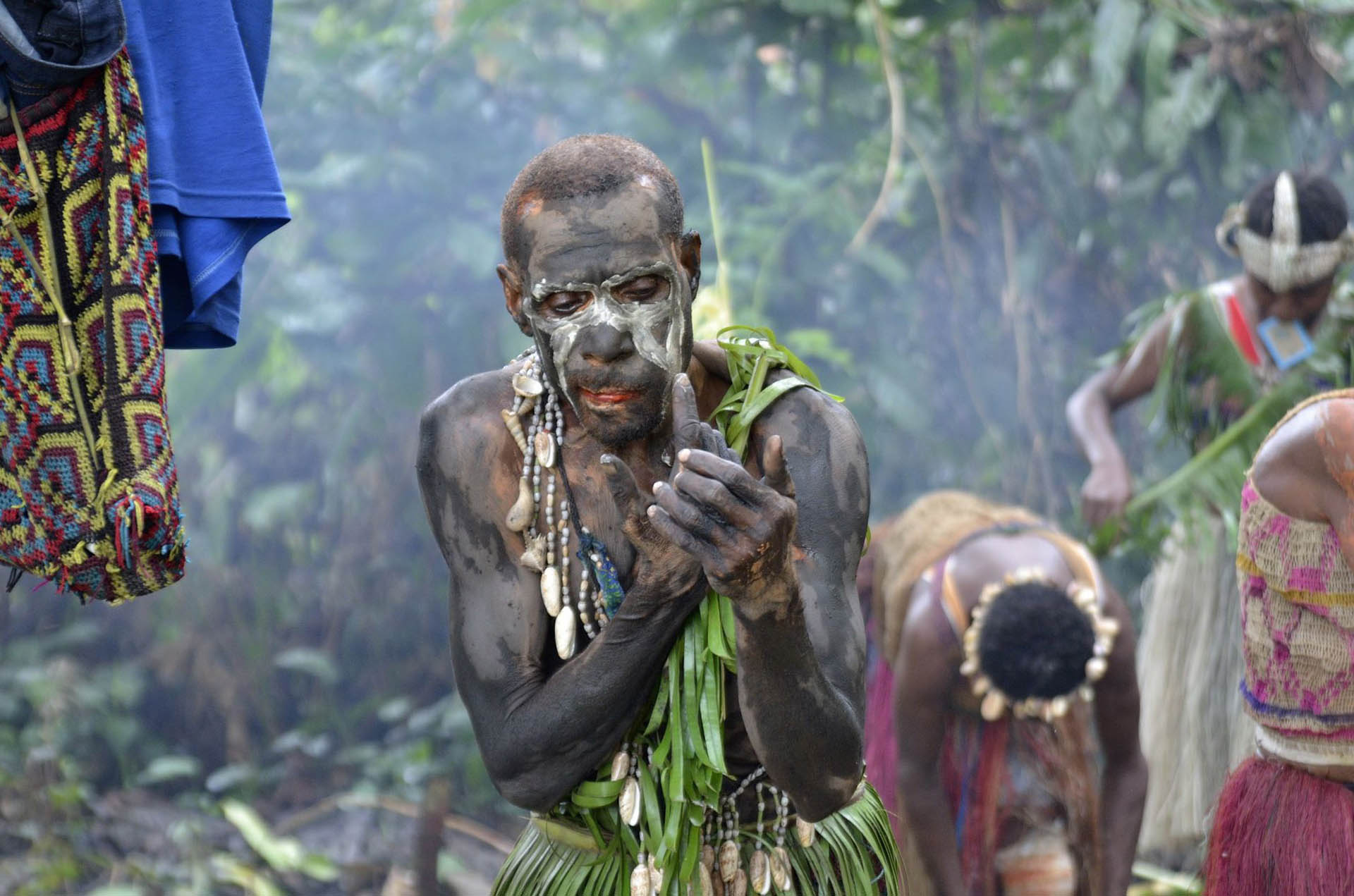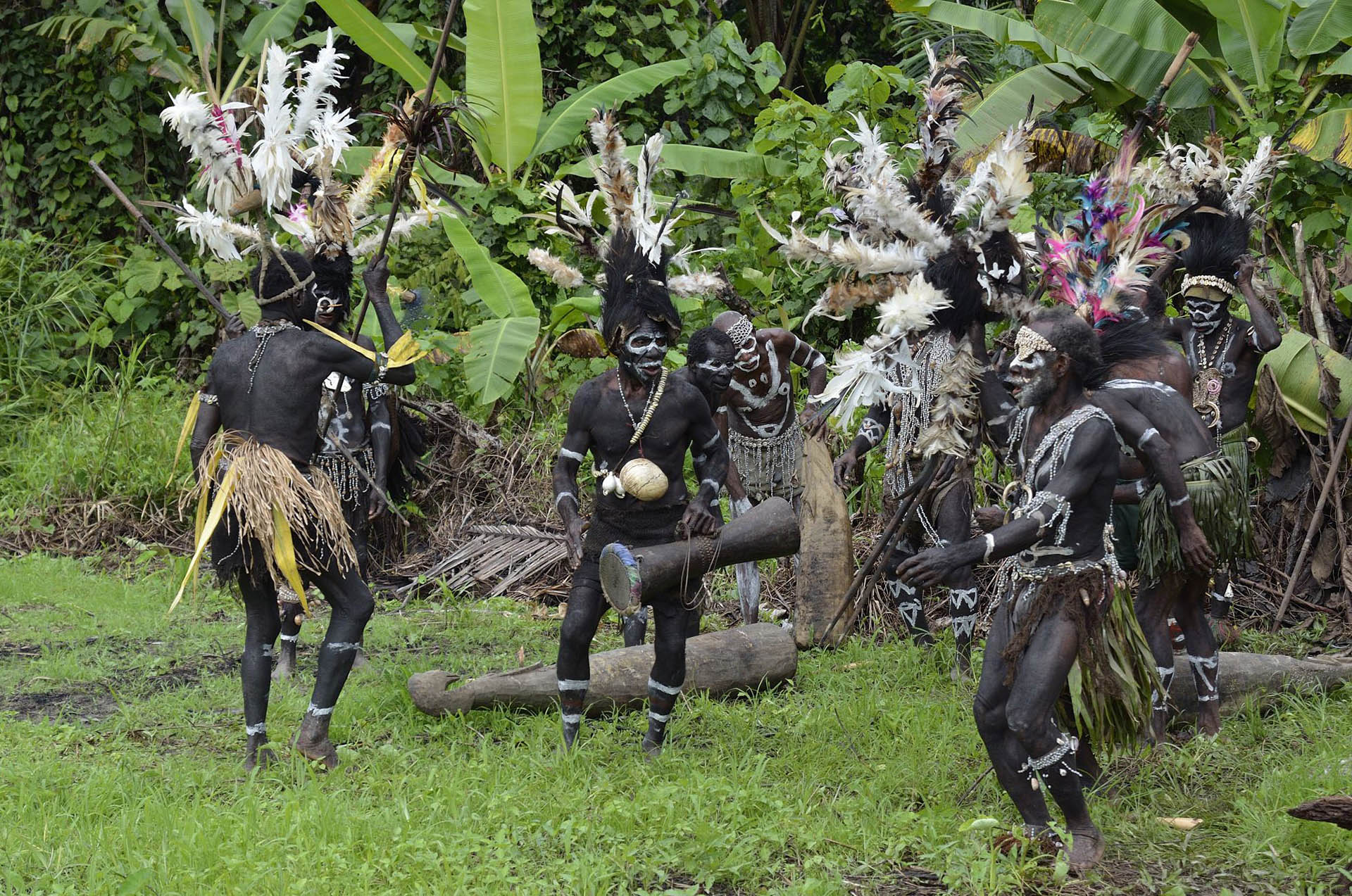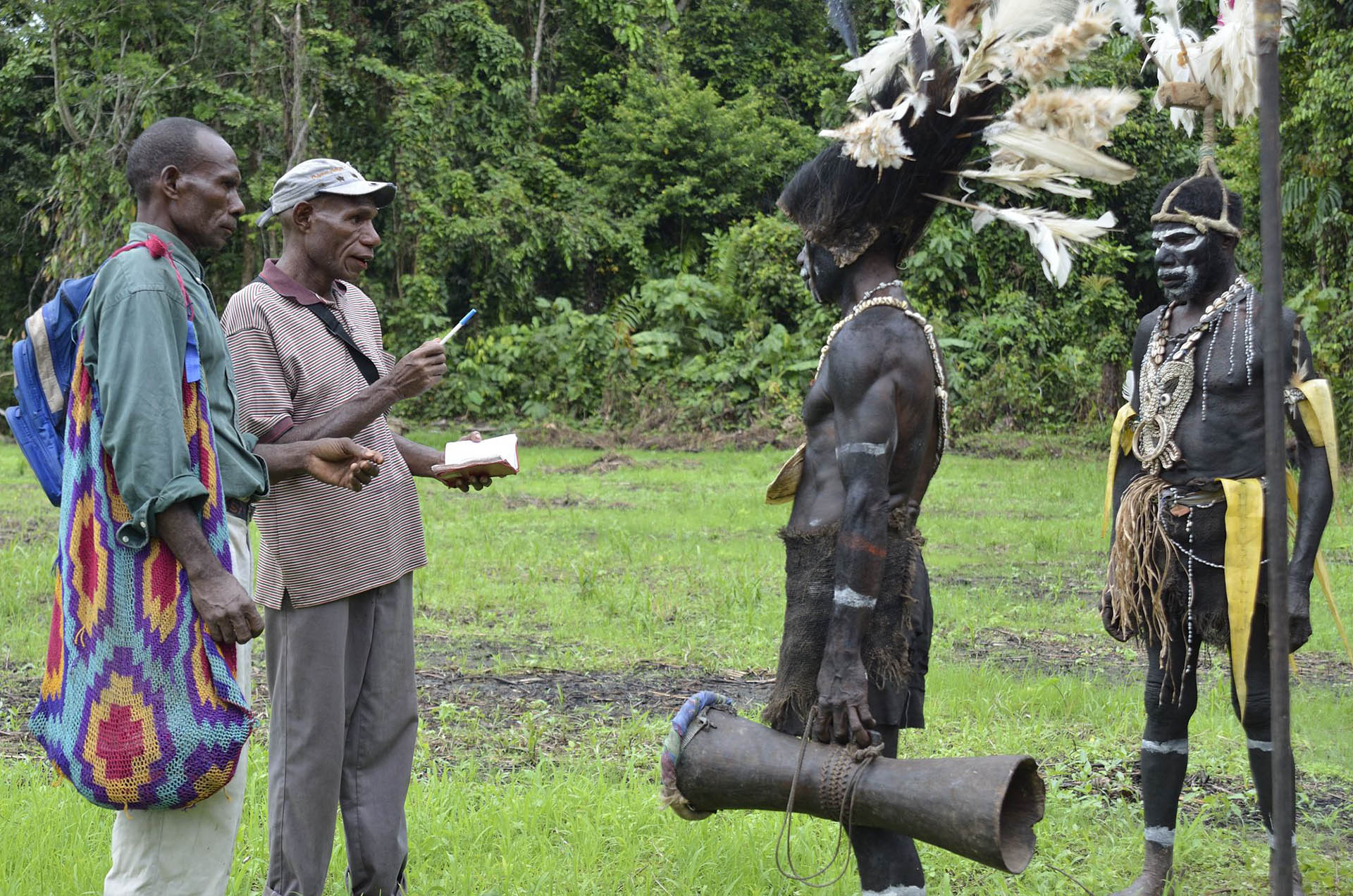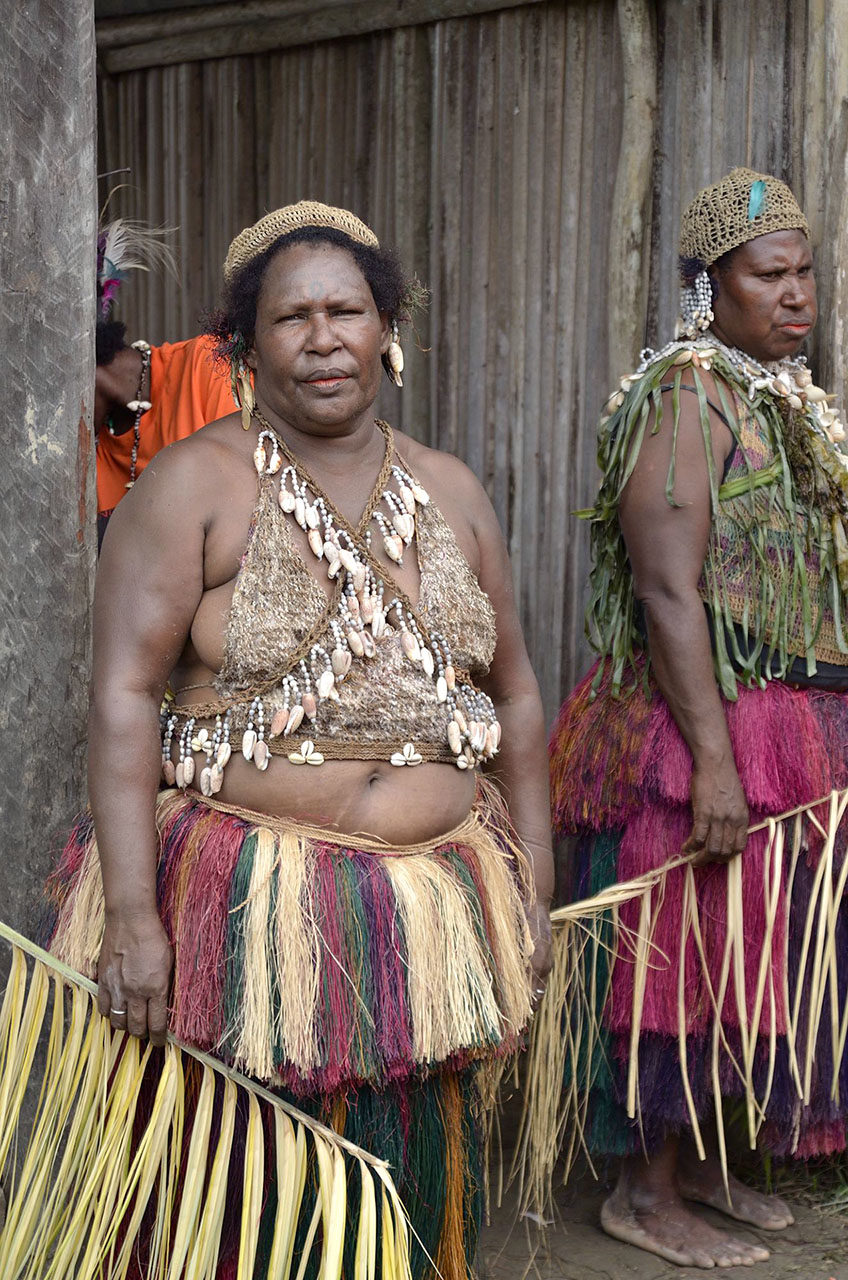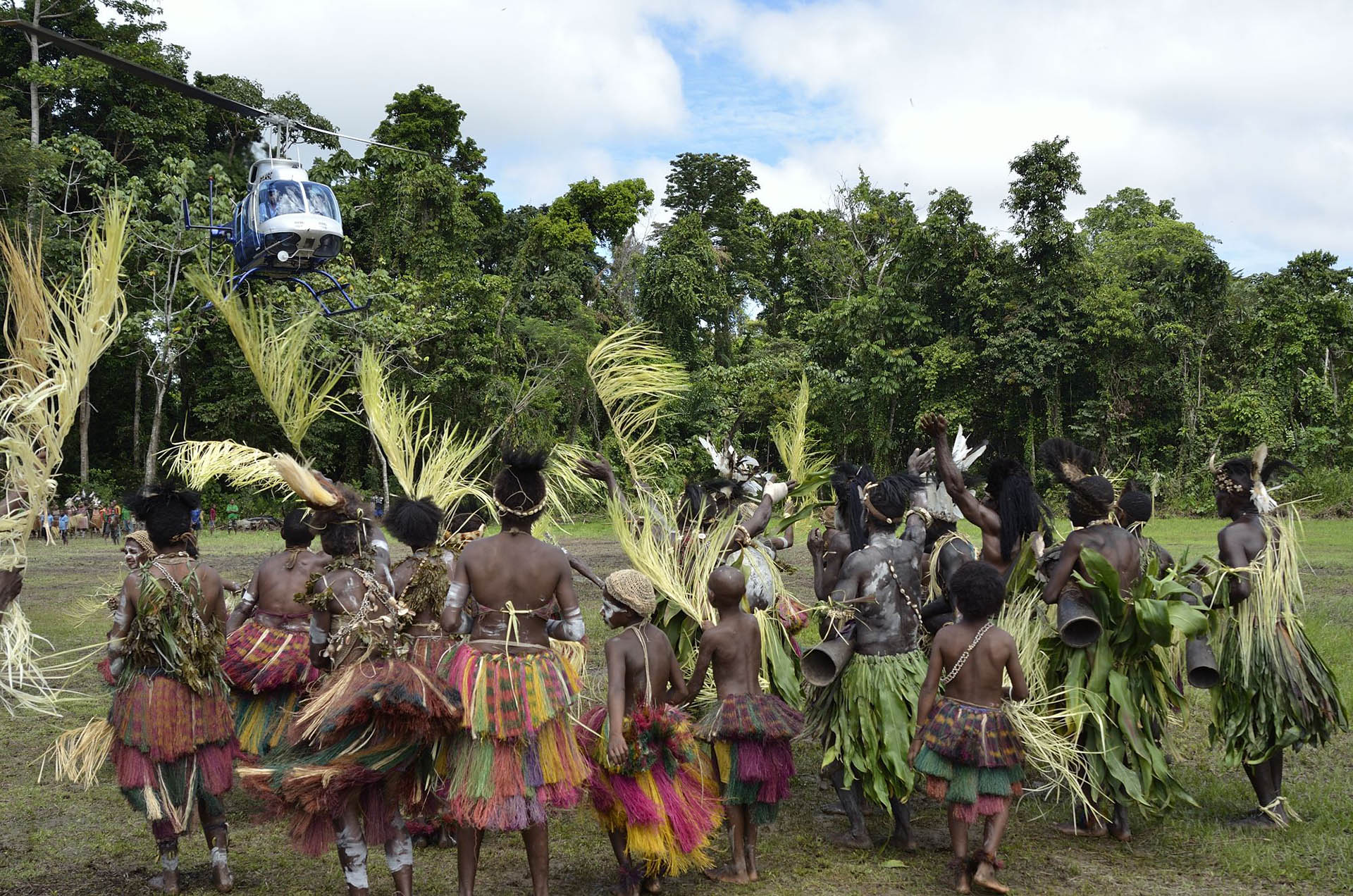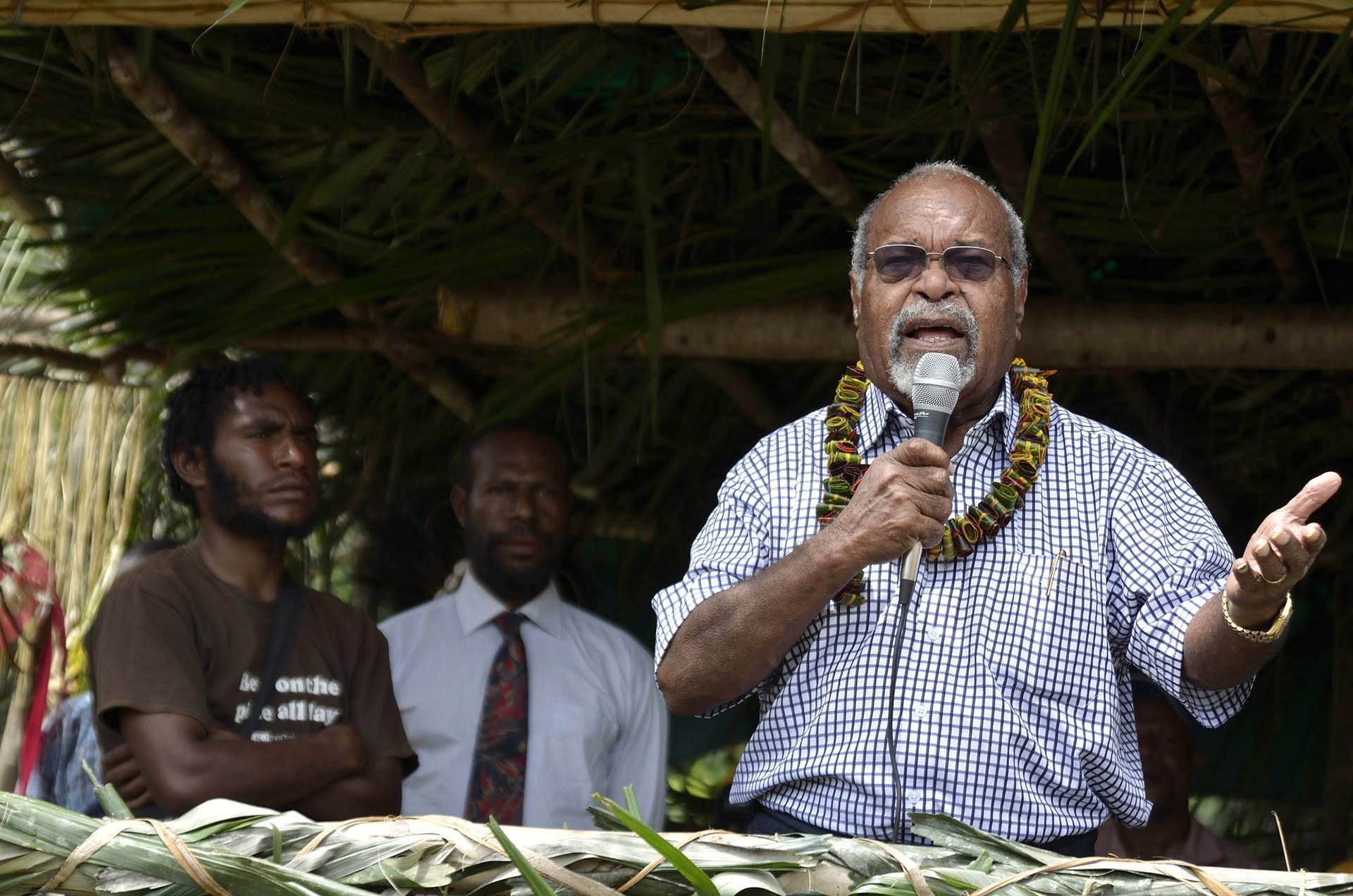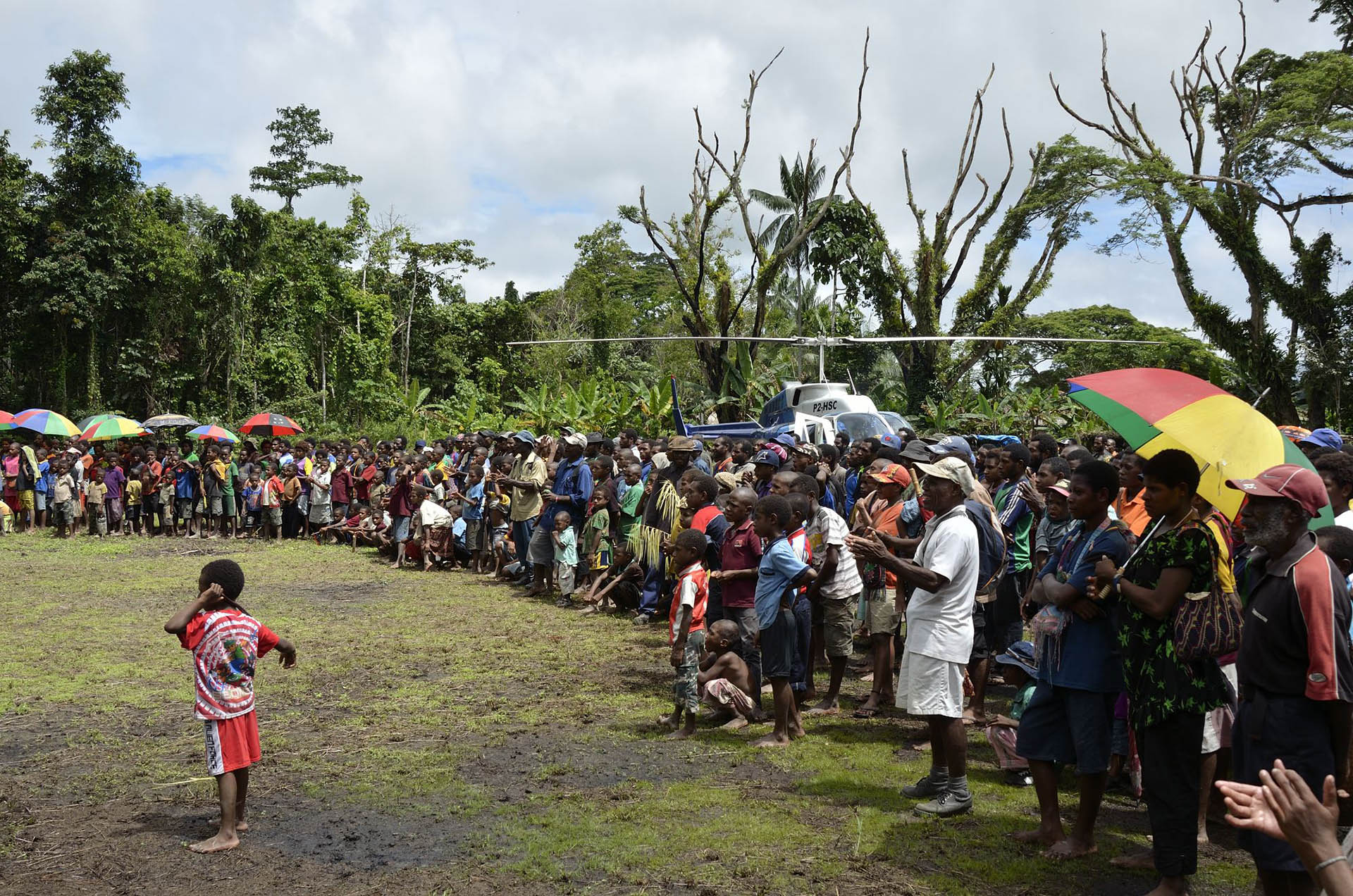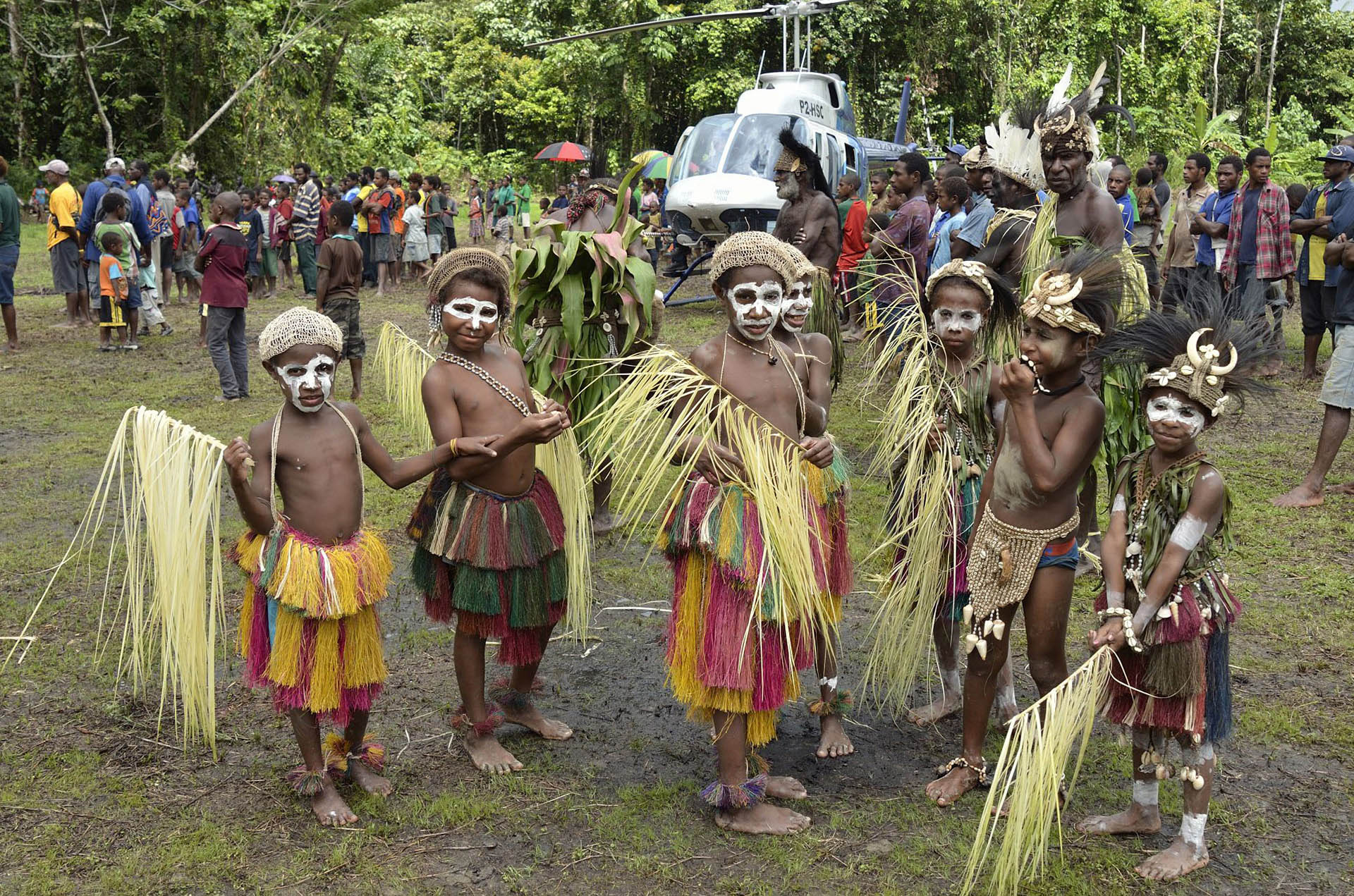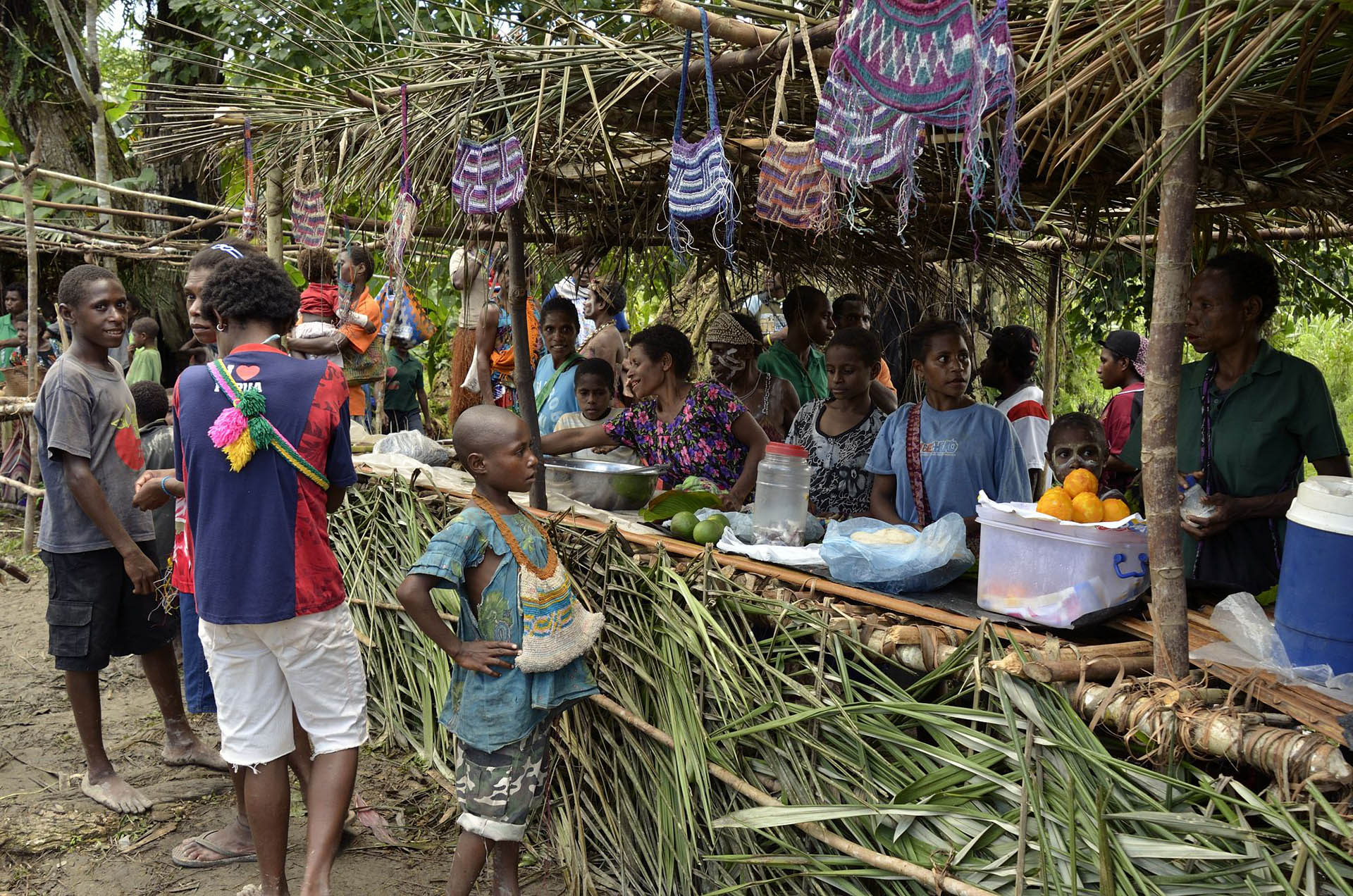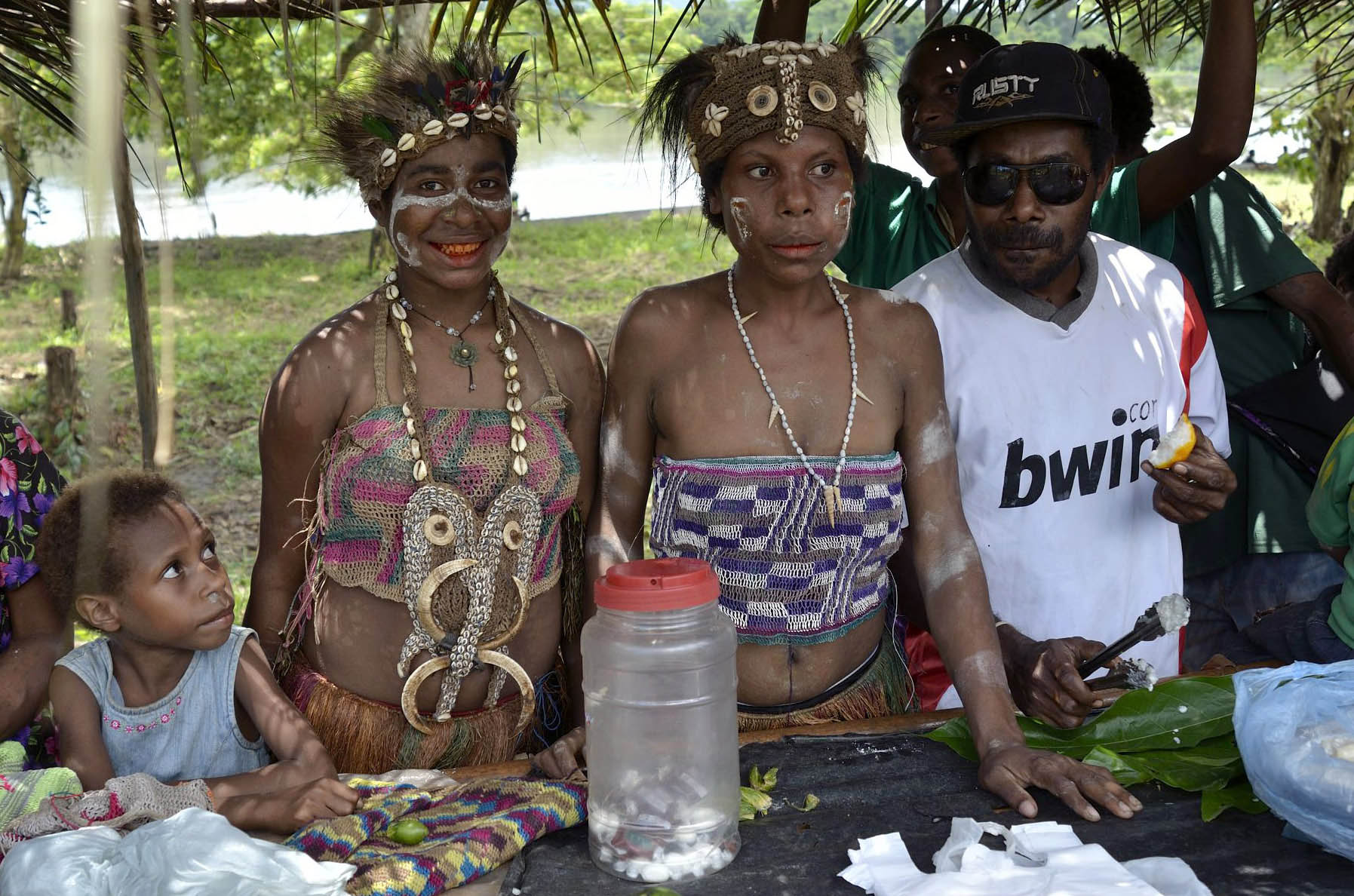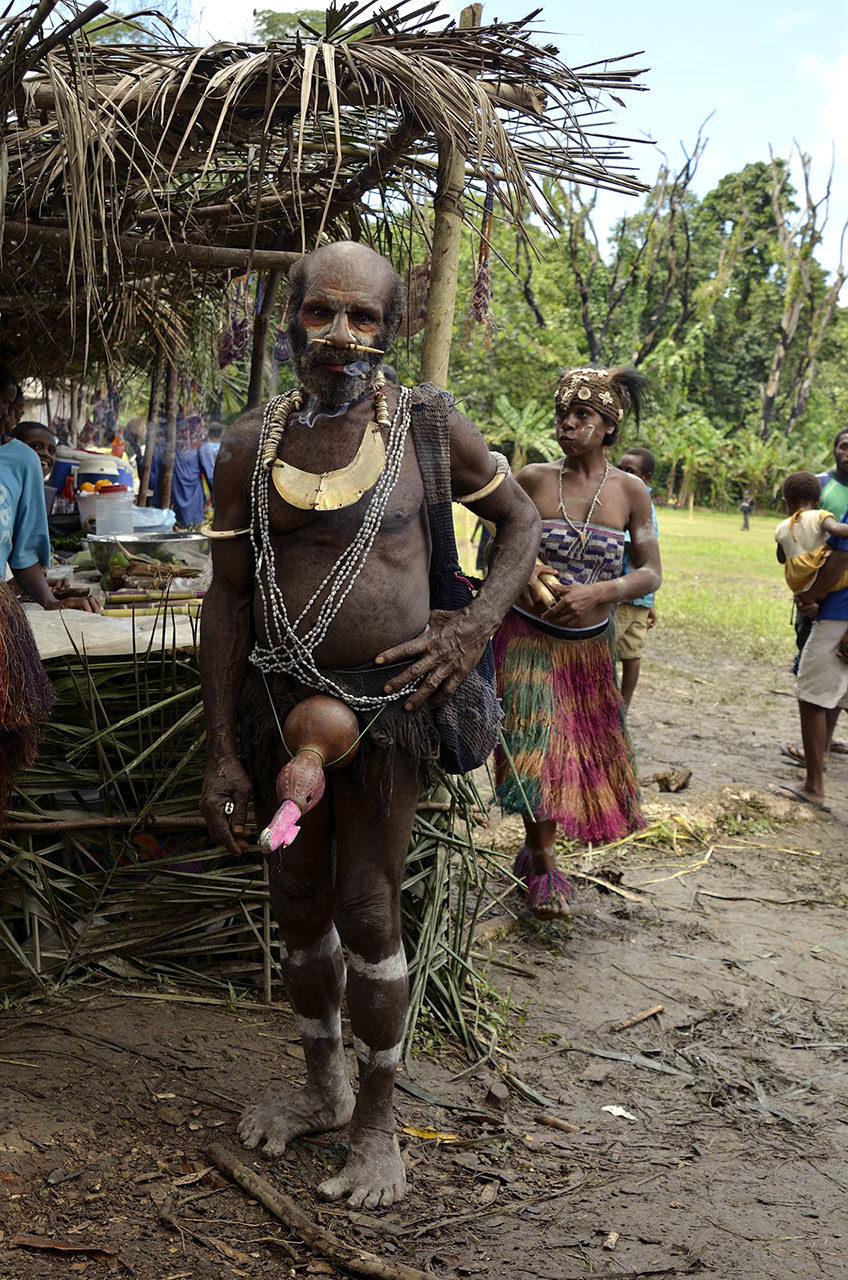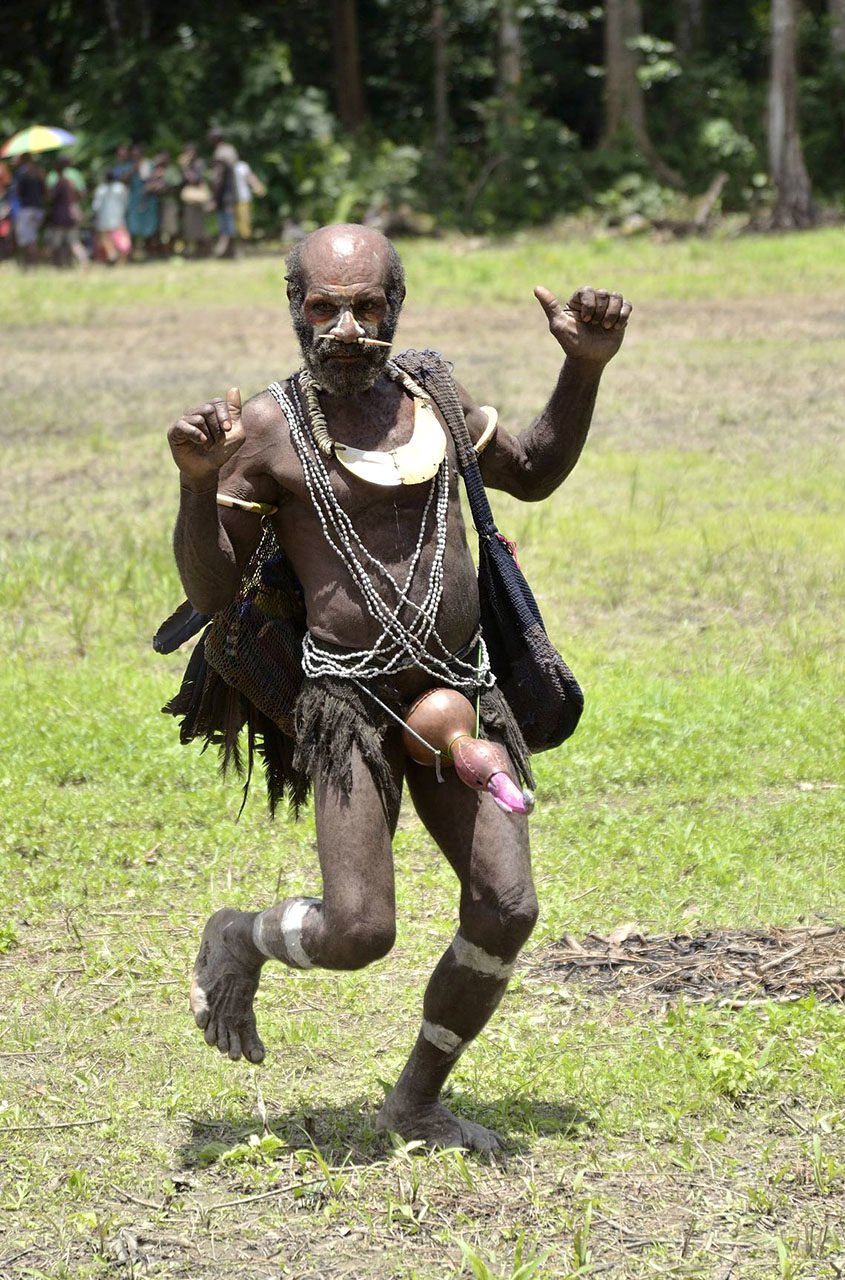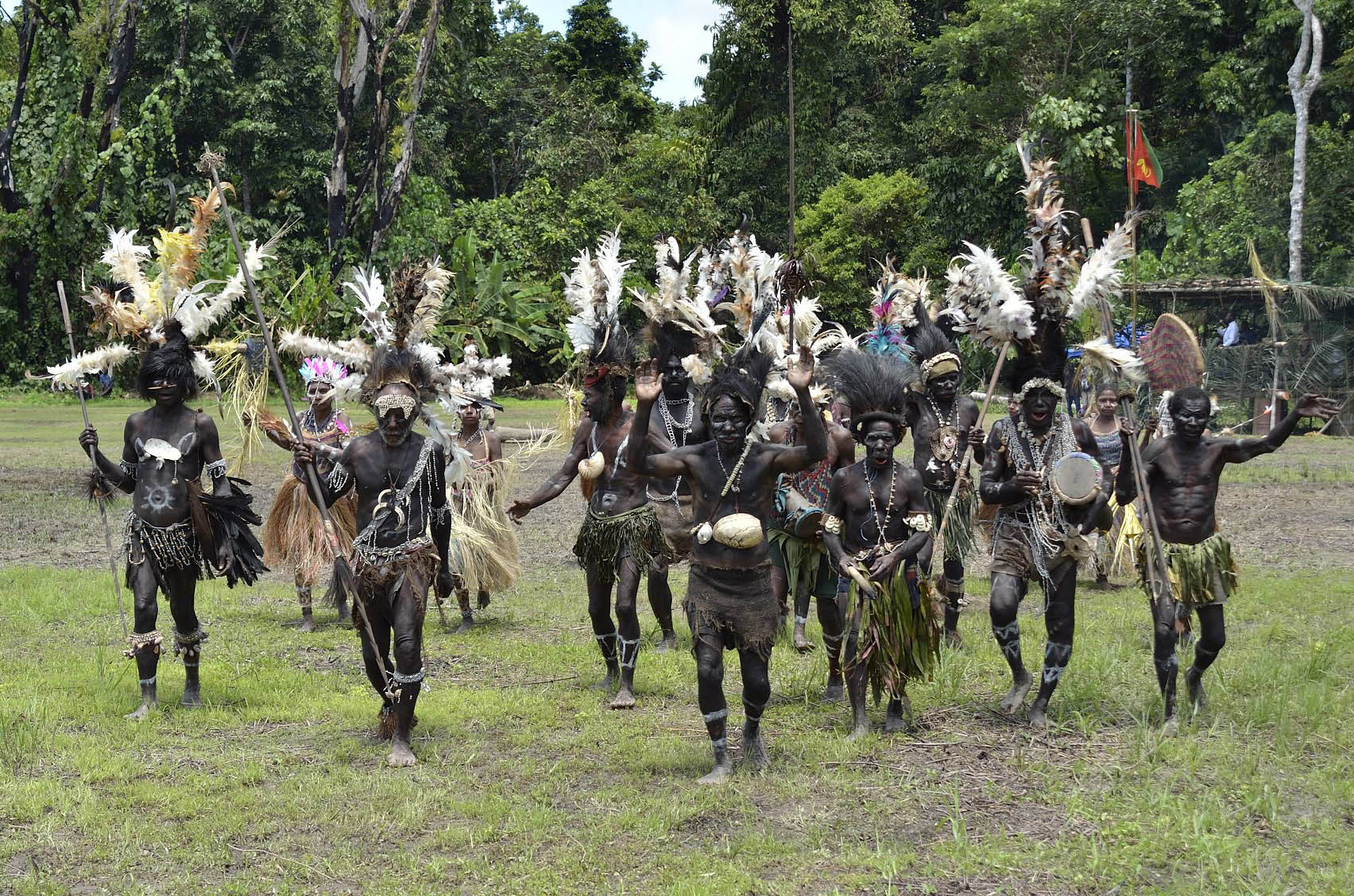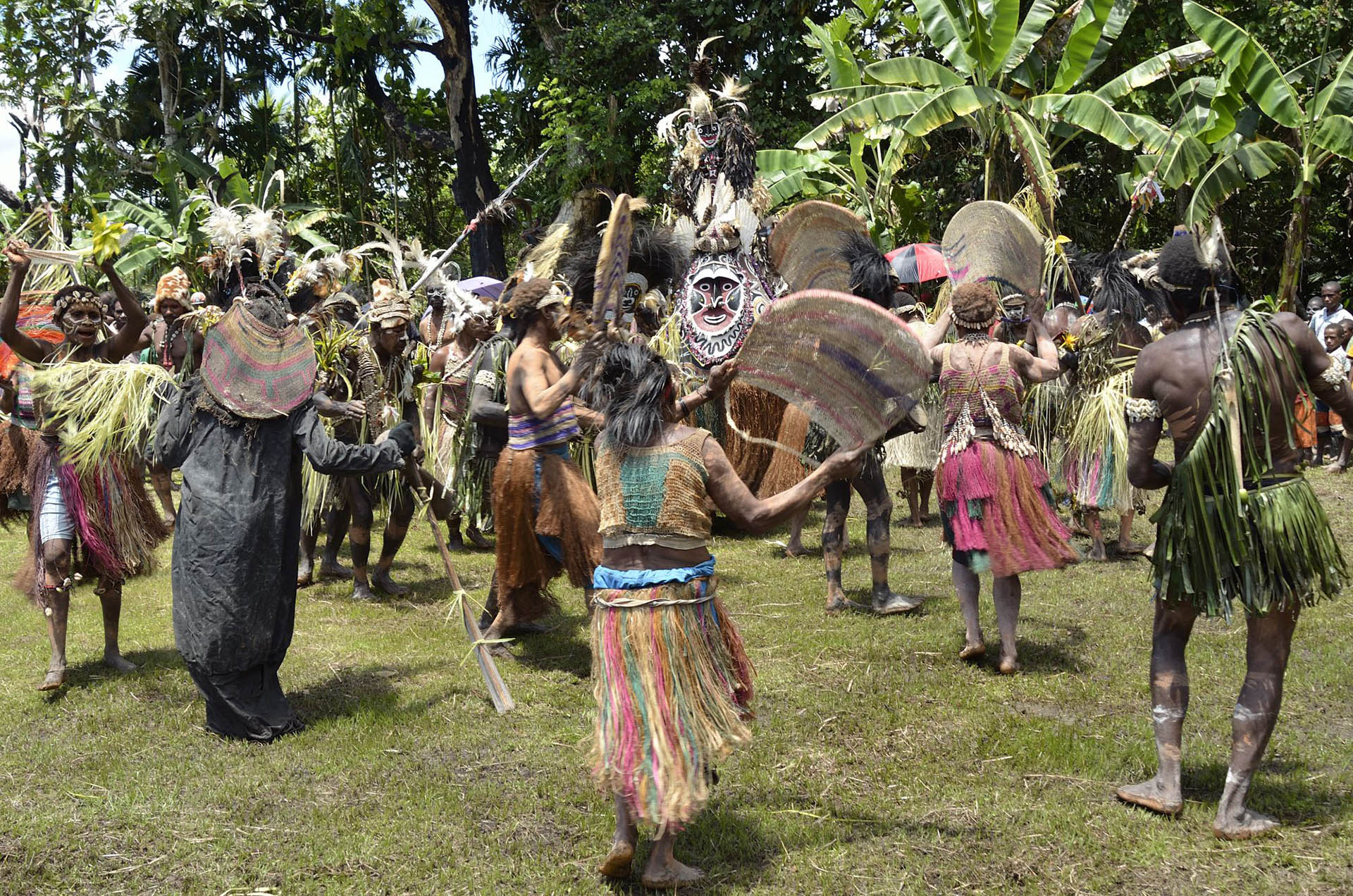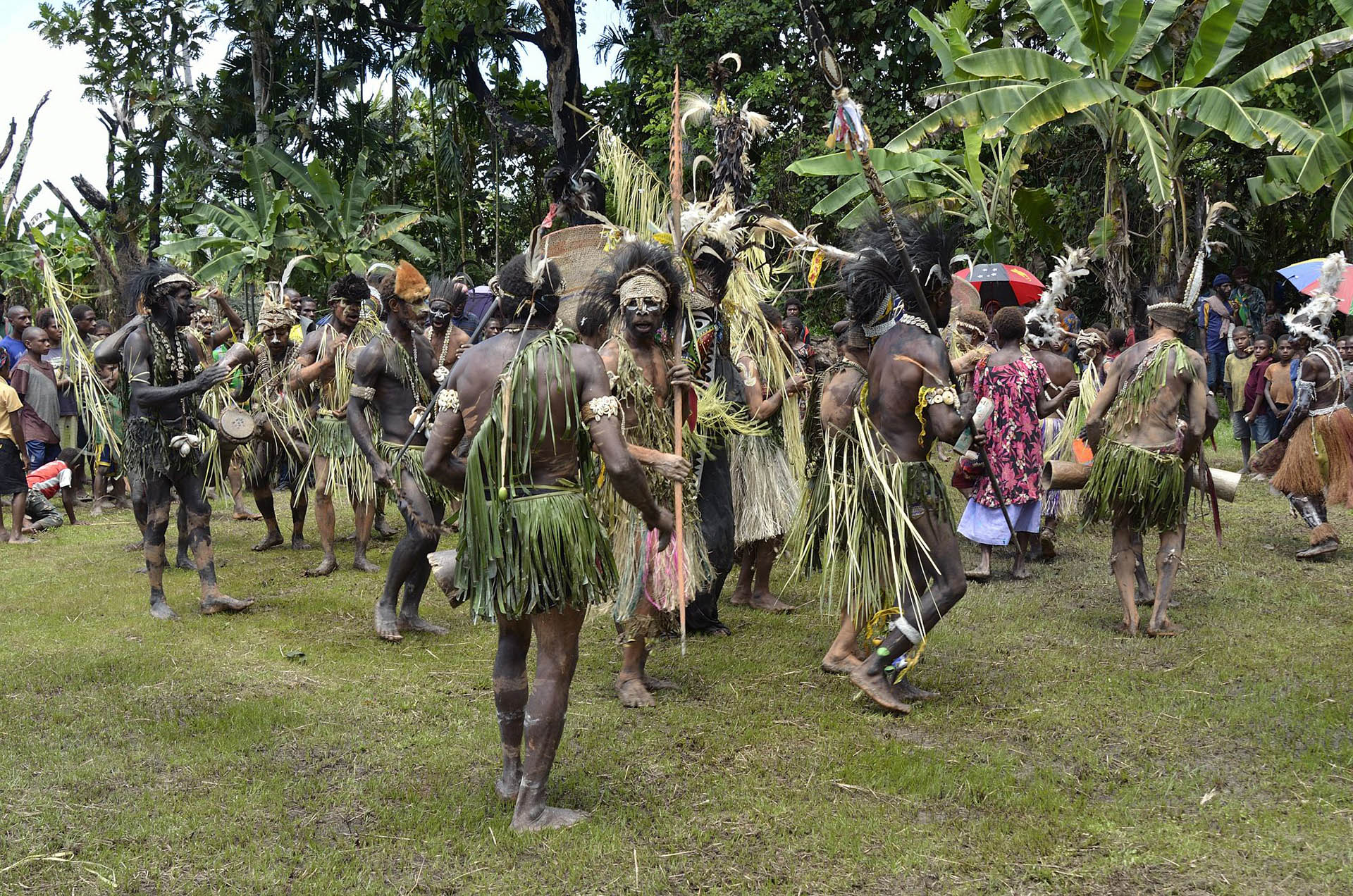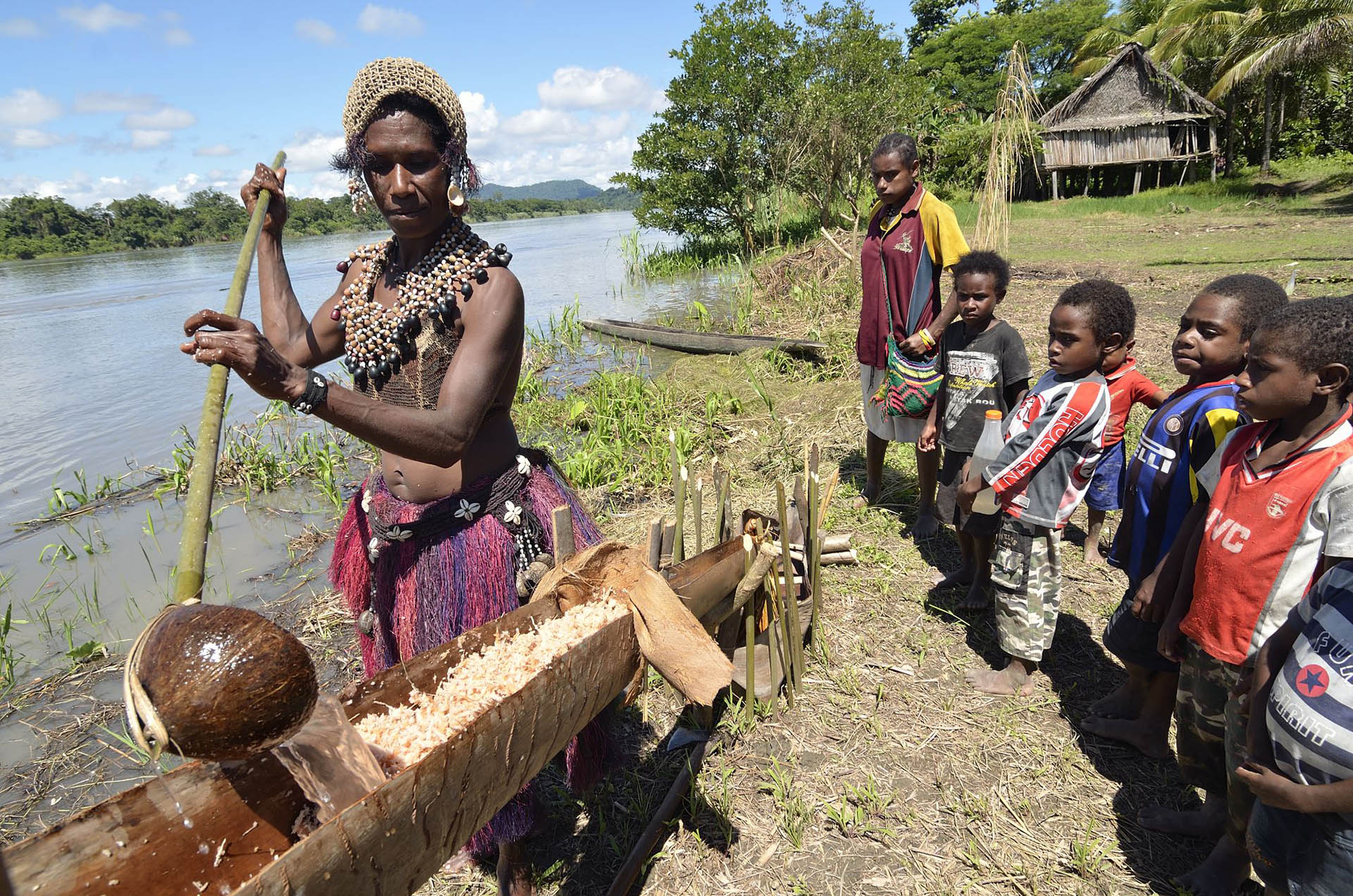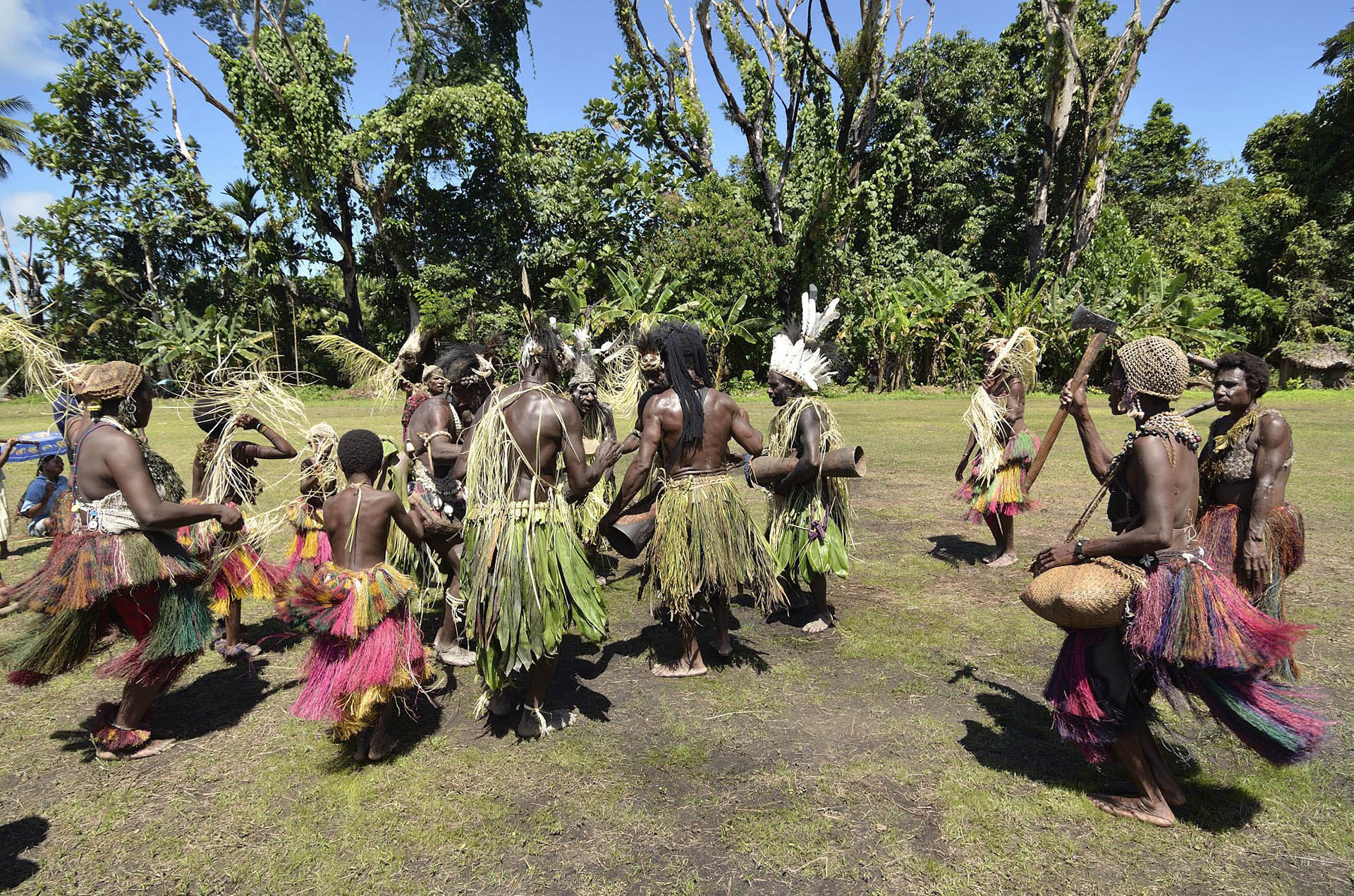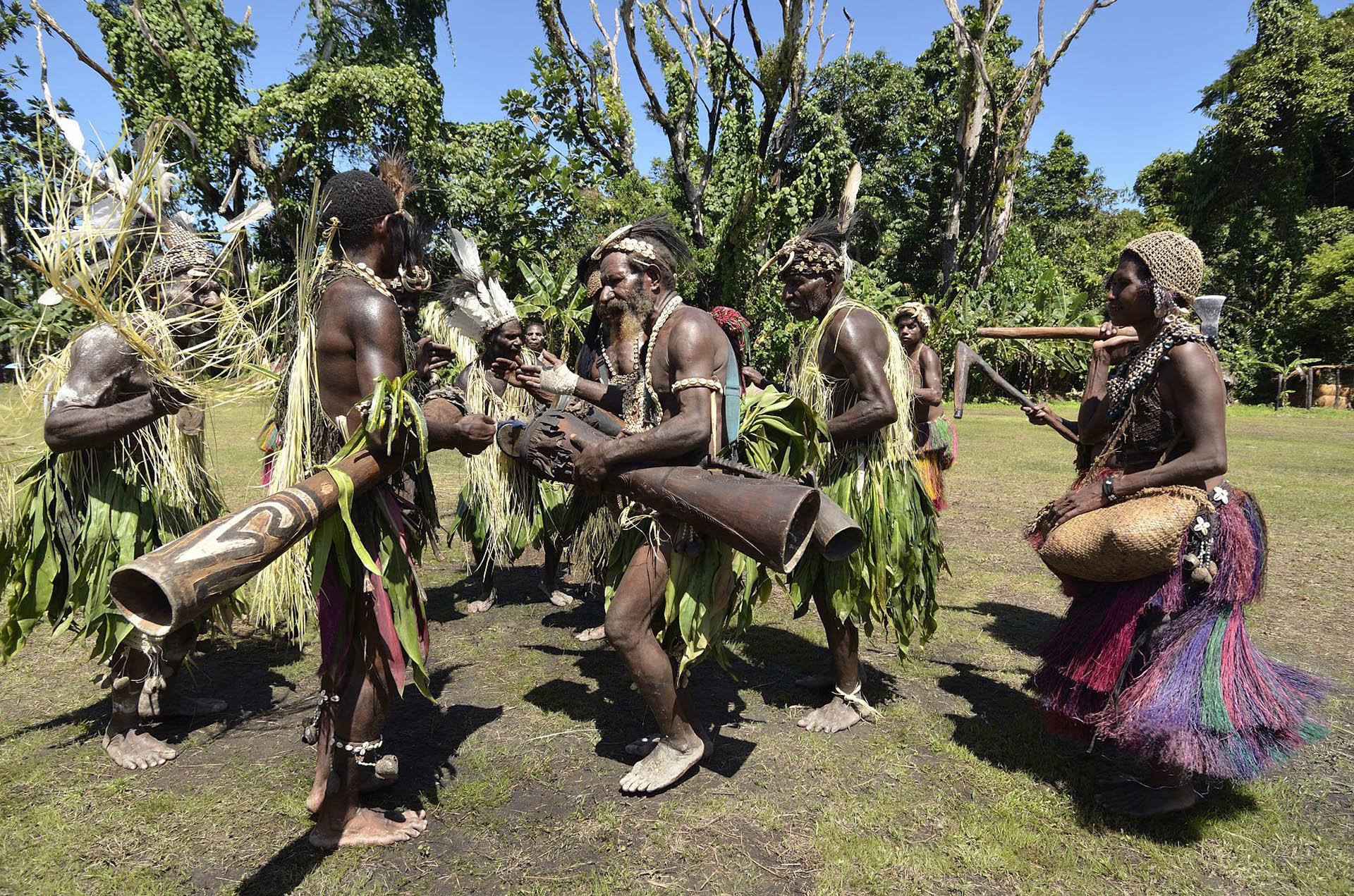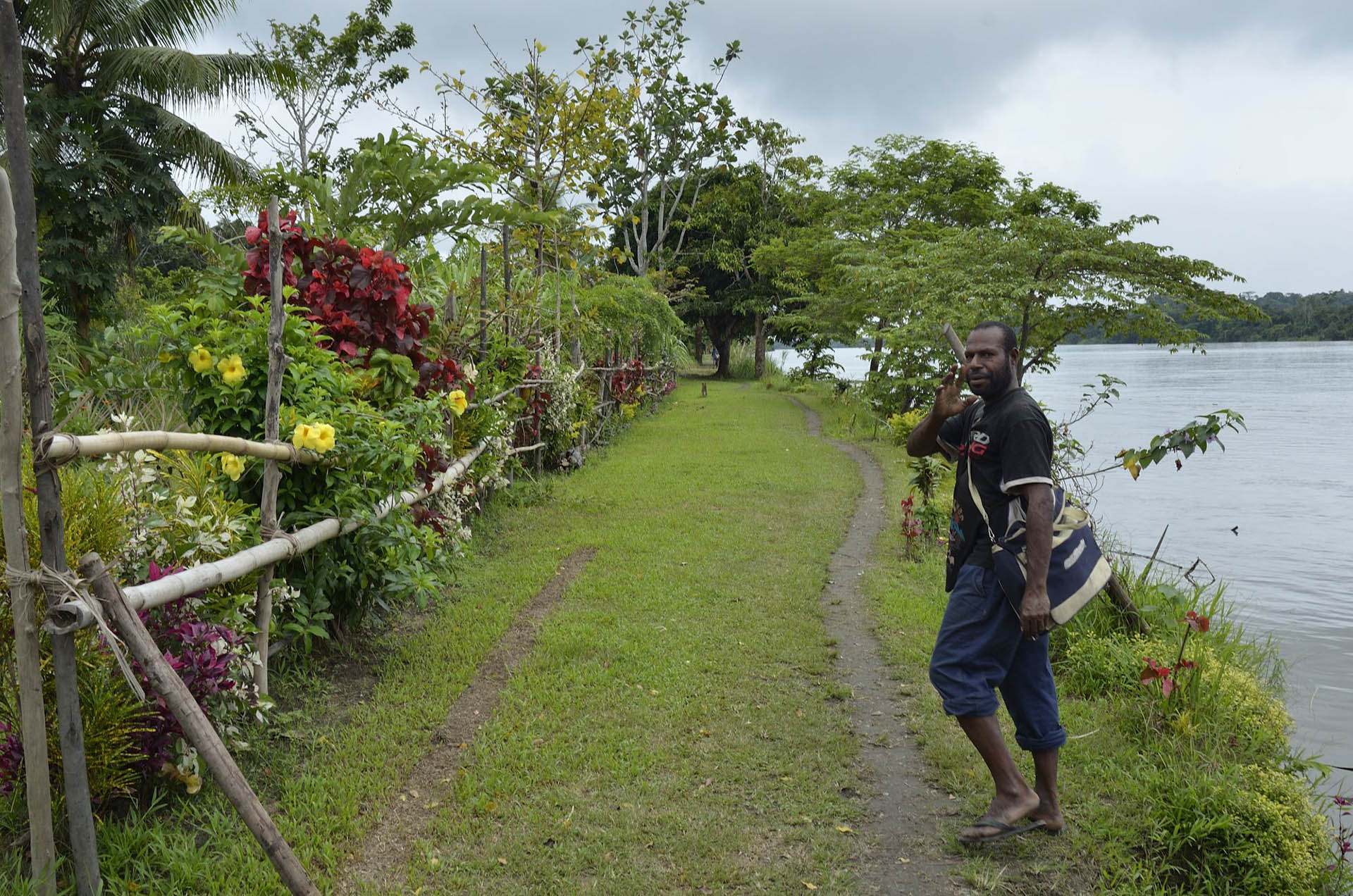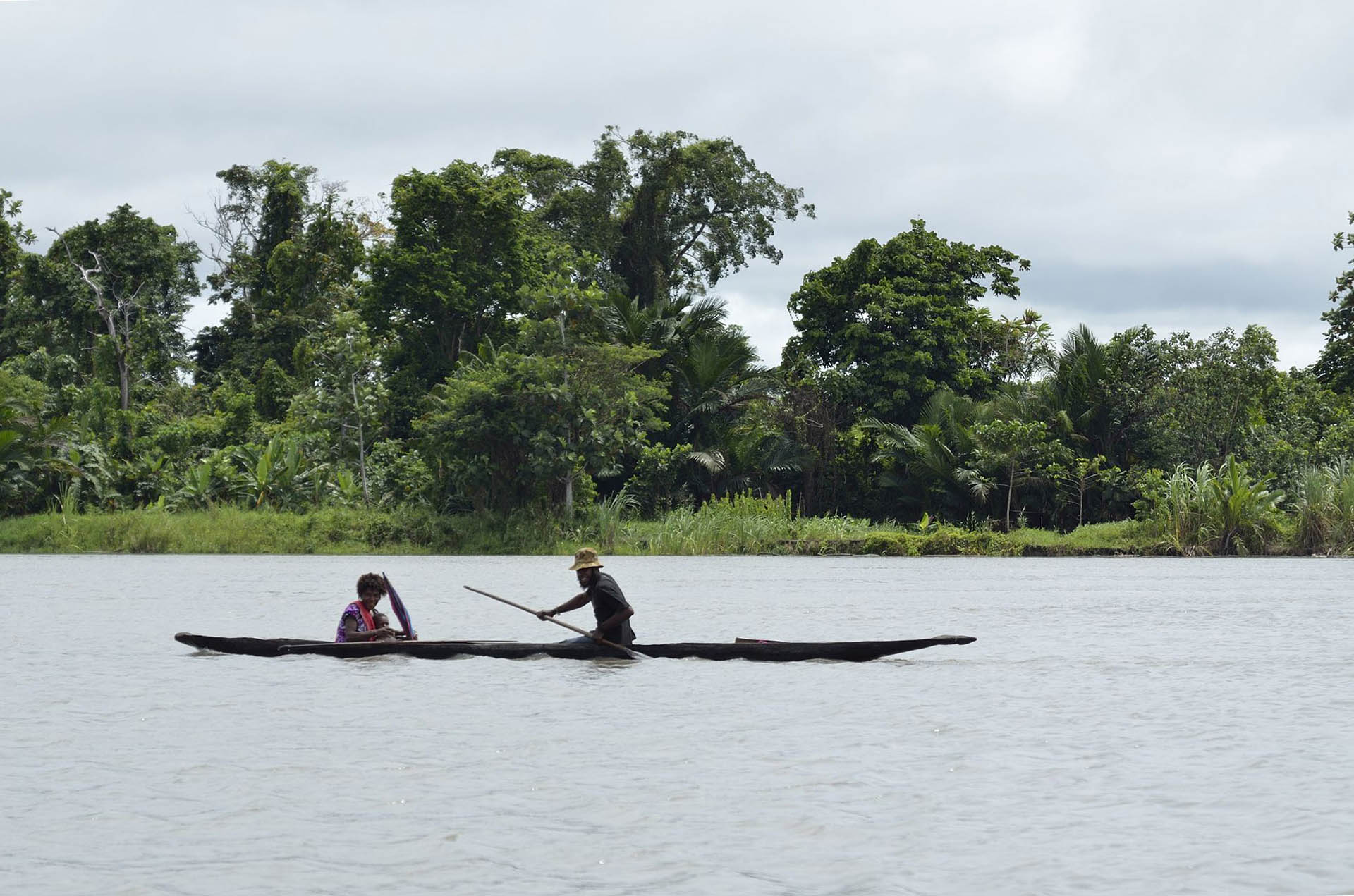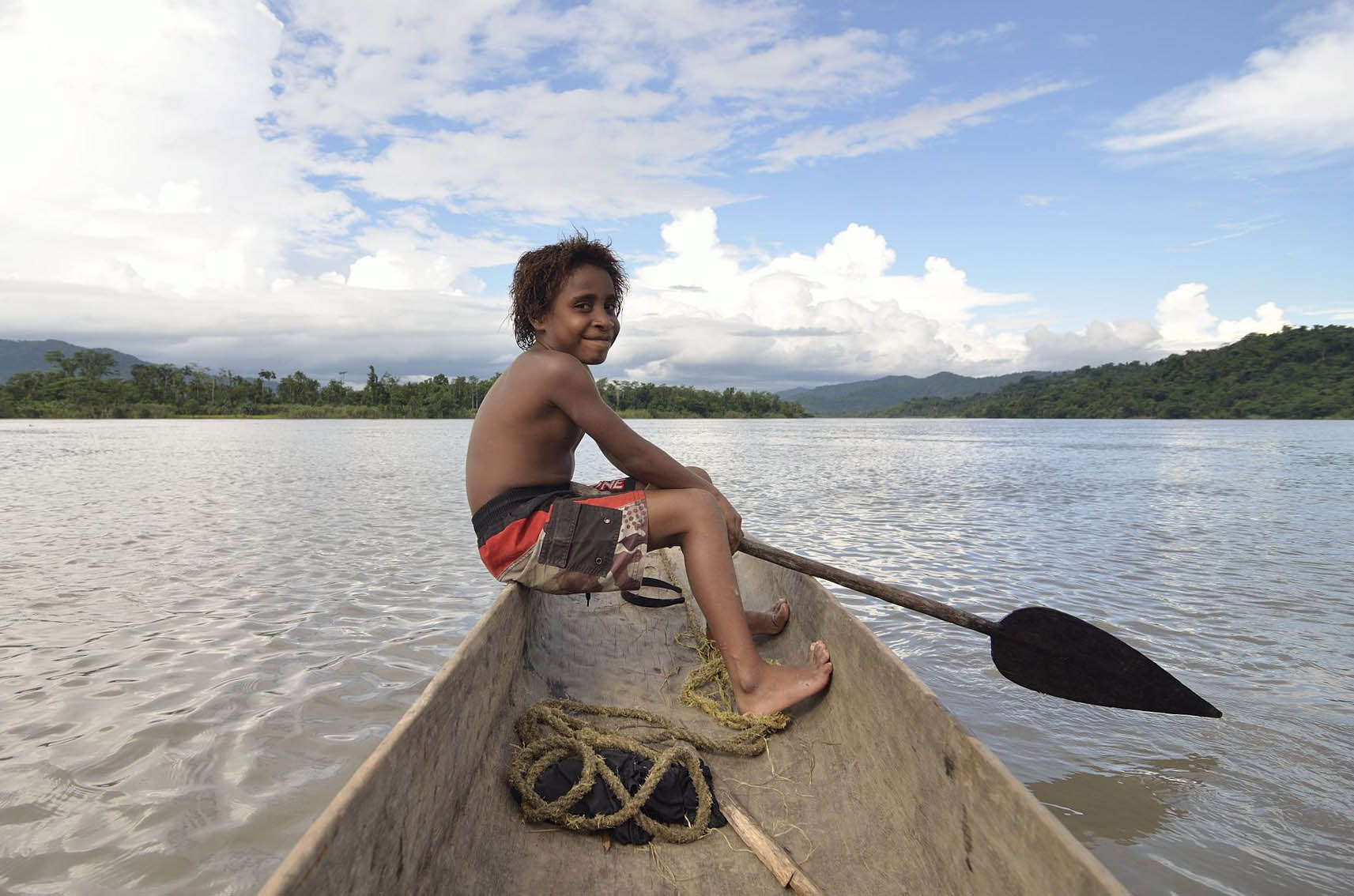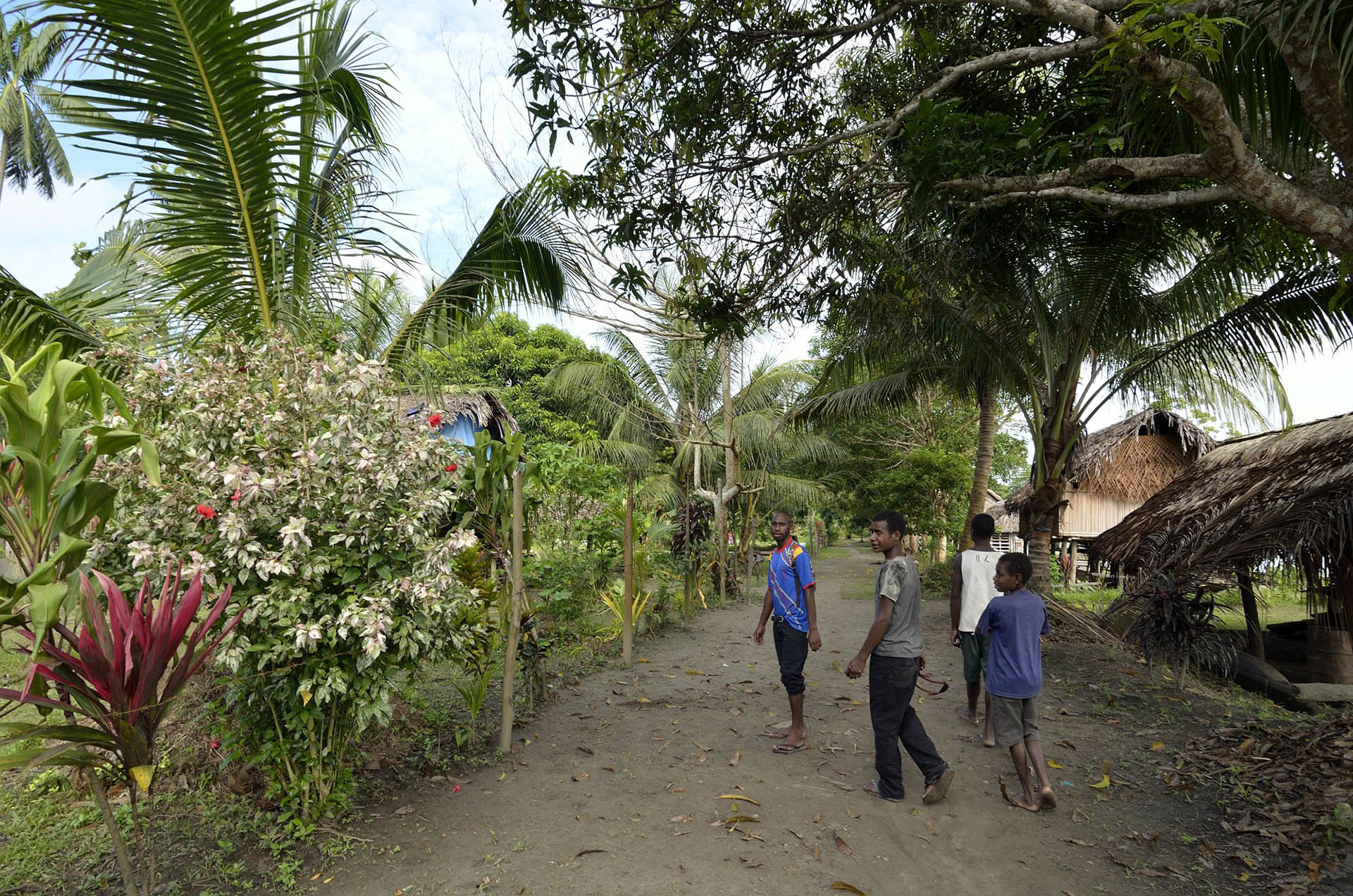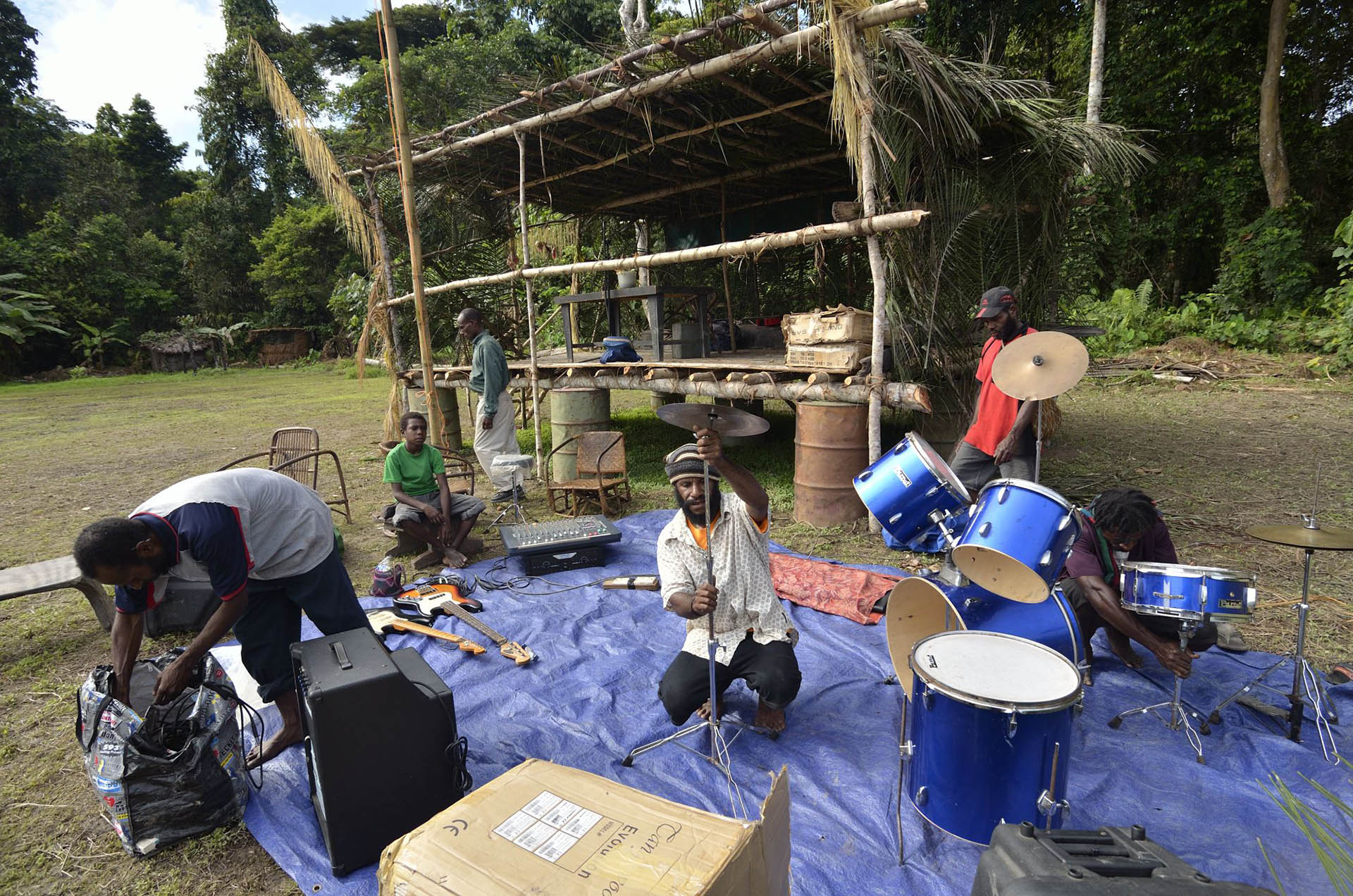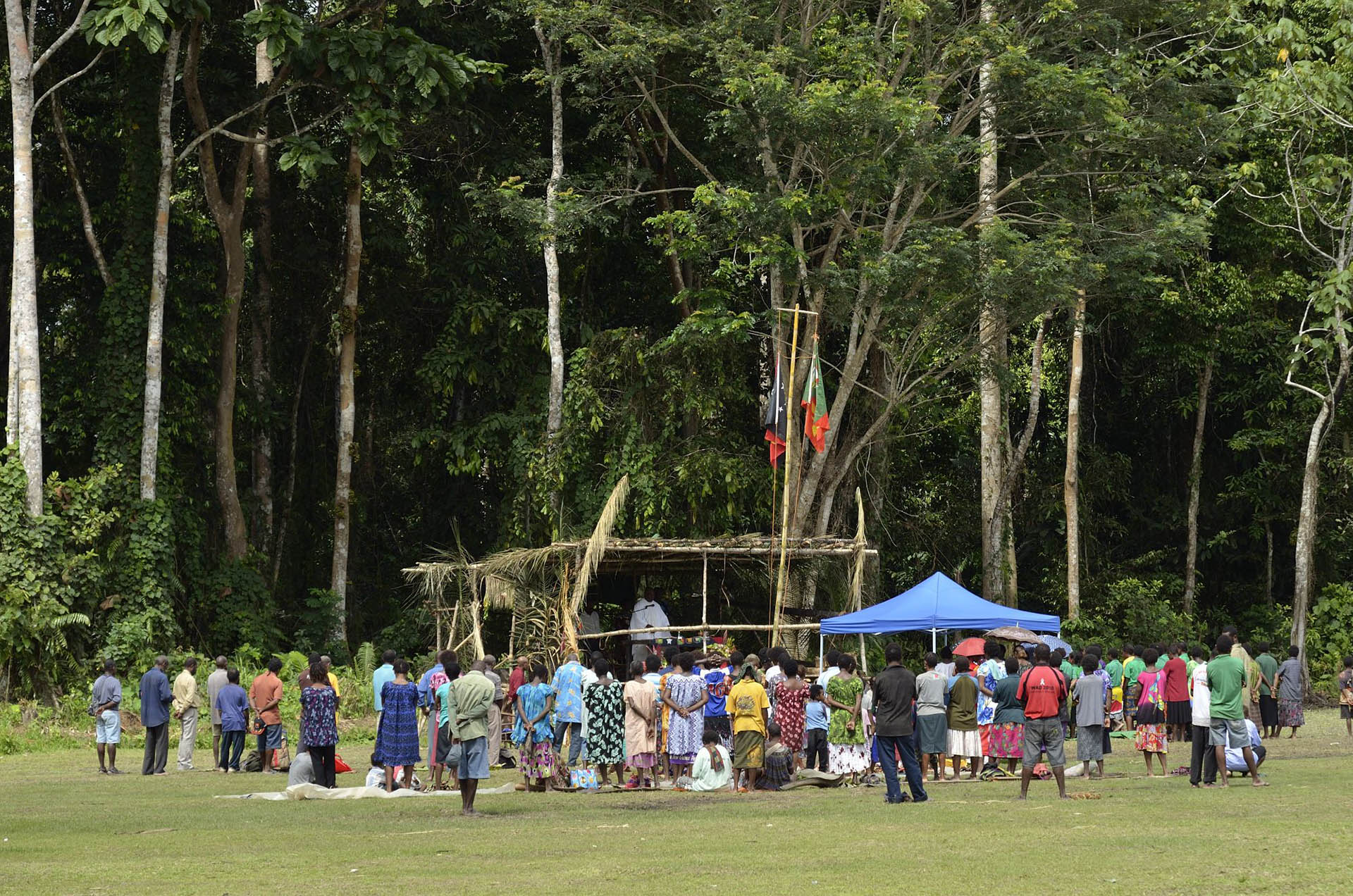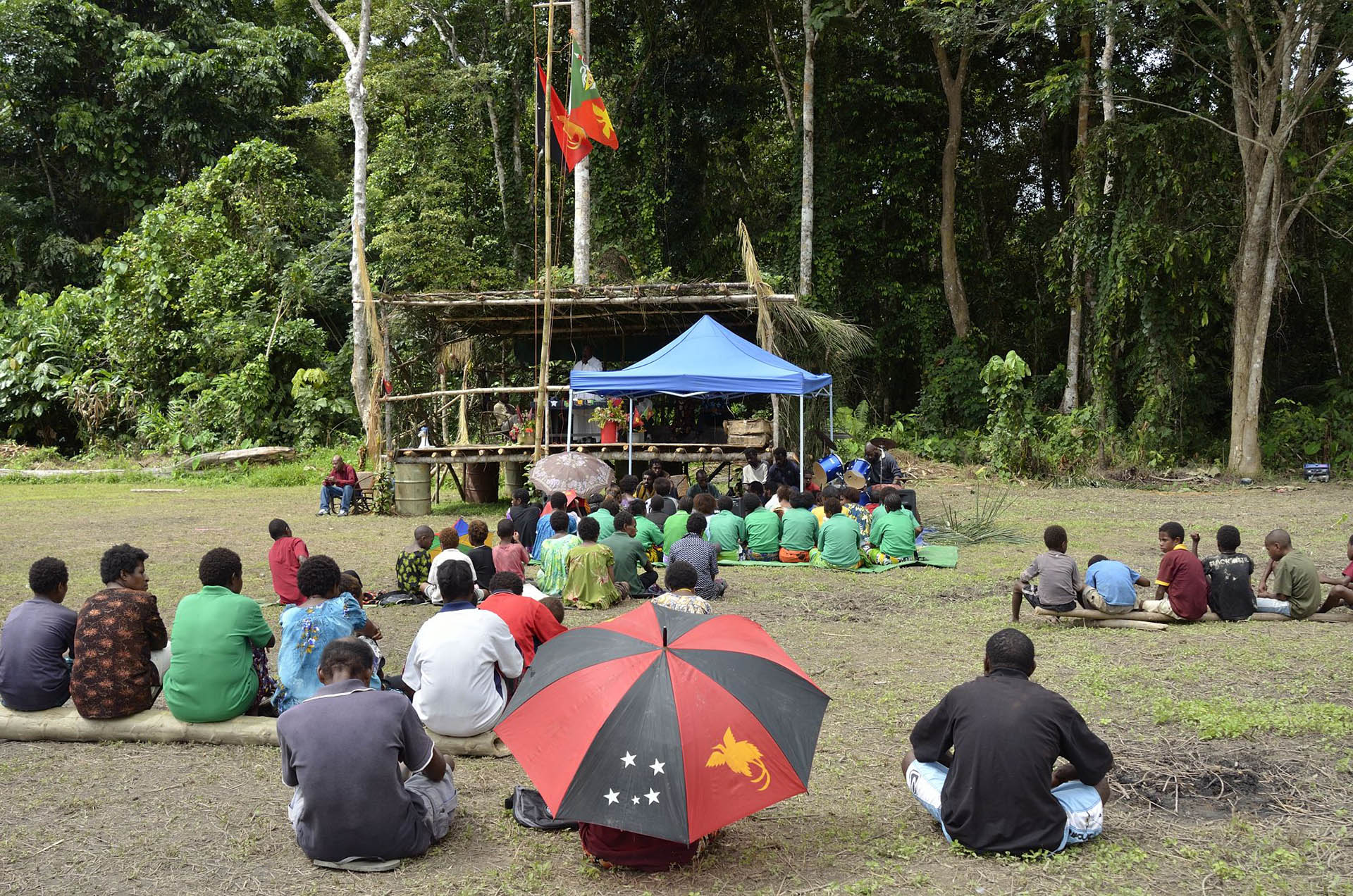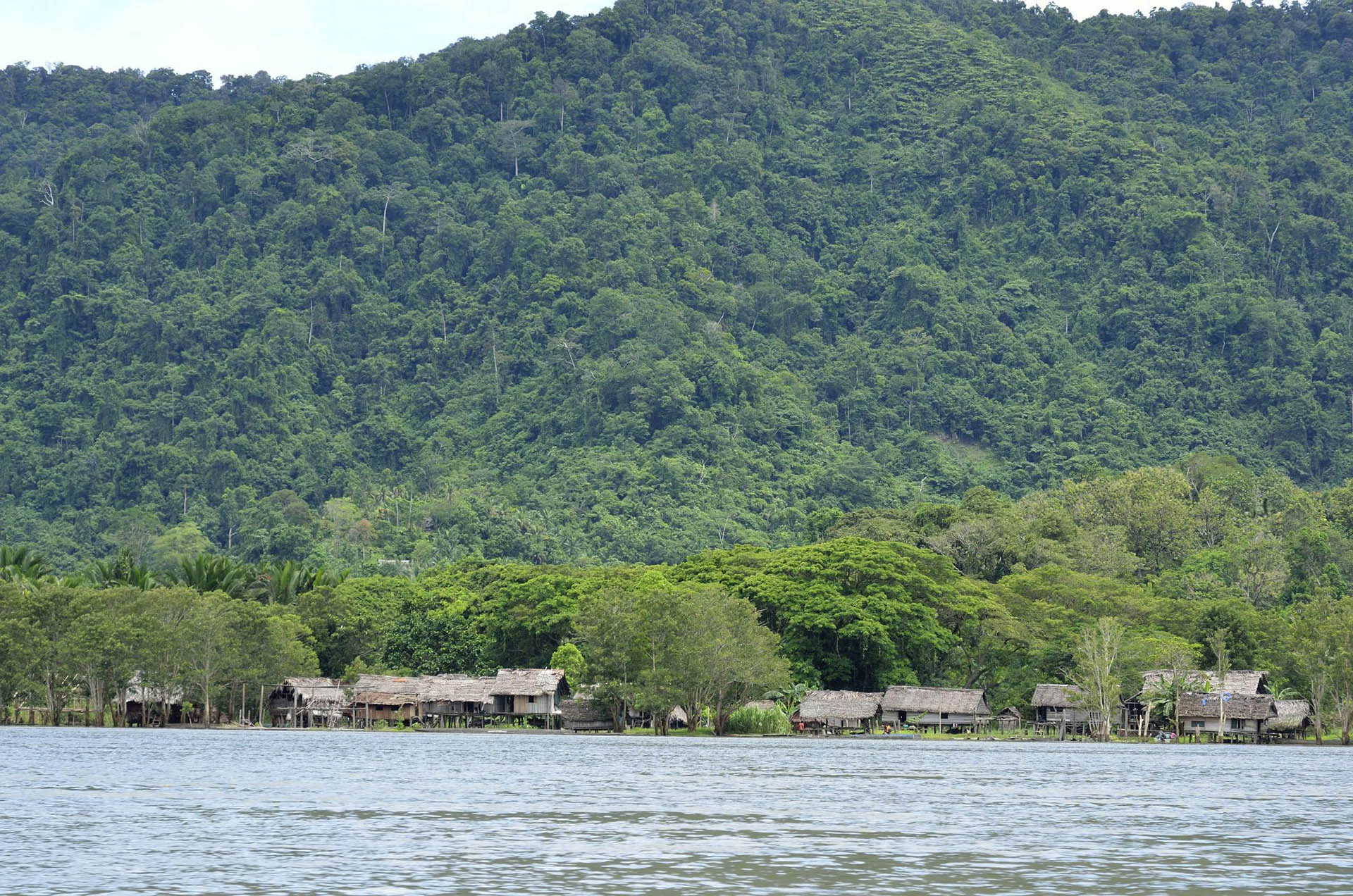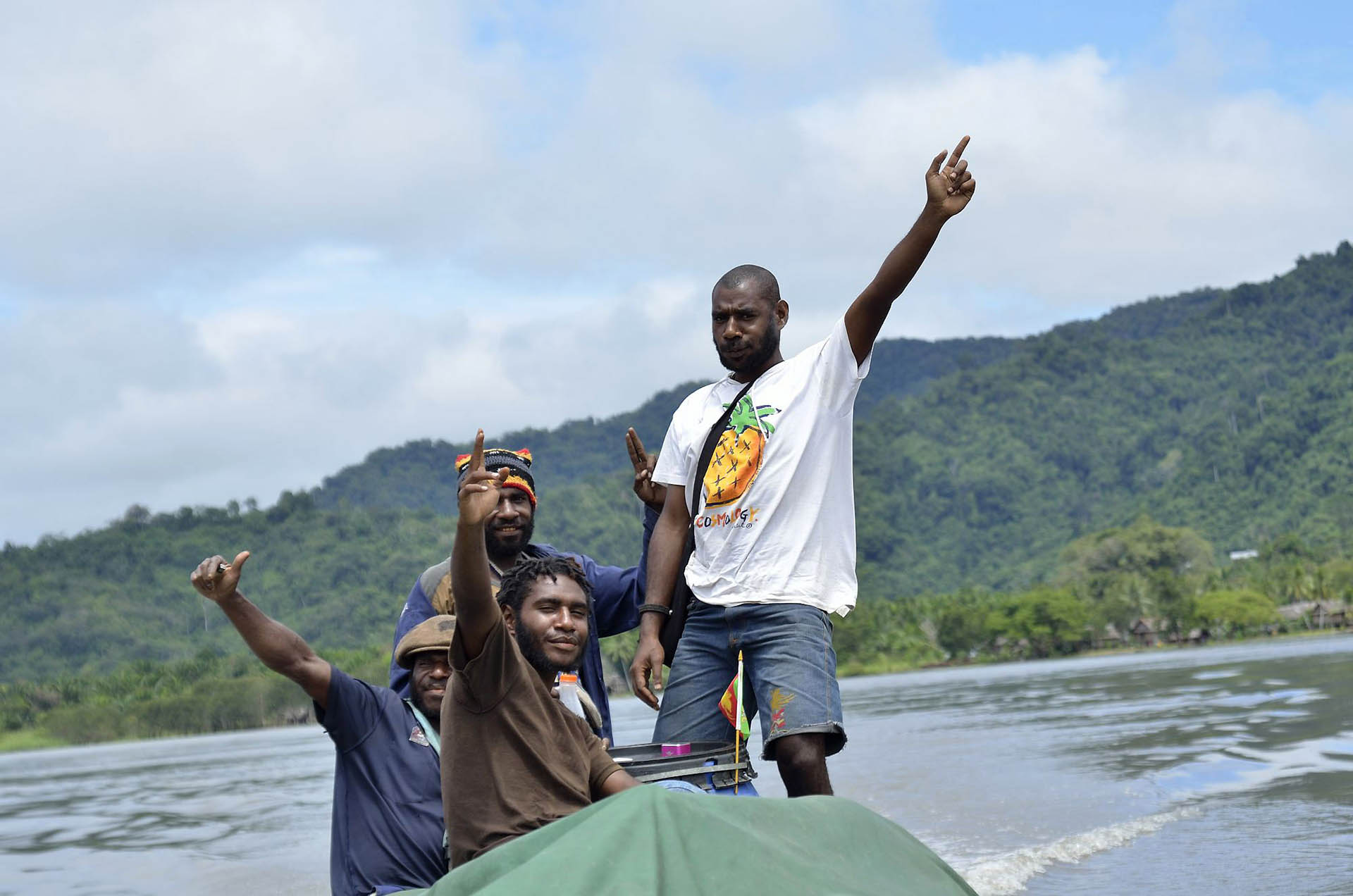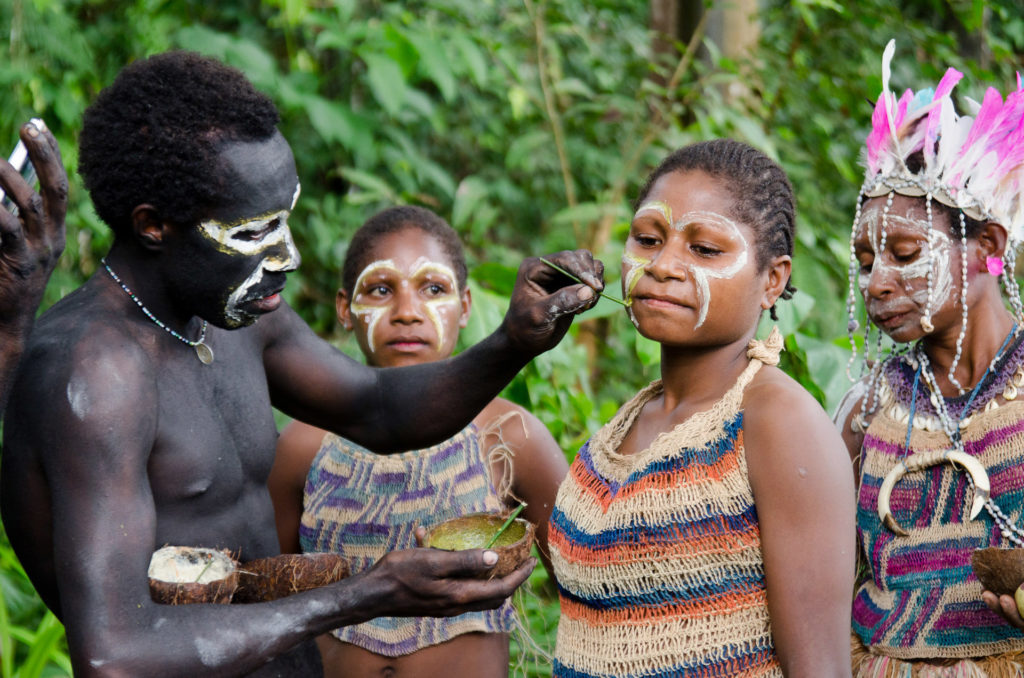
The 16th of September is the date when Papua New Guinea officially became independent. In September 2012, I was on a two months trip along the Sepik River. Emily, Mary and Lorrie Augwi, three sisters, from the family who hosted me, organized a singsing in Purkunawi, a village on Middle Sepik, to celebrate Independence Day. They were aiming to get the authorities’ support for a vocational school, and they invited Sir. Michael Somare, at that time the governor of Sundown Province, to attend the singsing. (Somare was the first prime minister of PNG.)
Traditionally, singsing is a ceremony or celebrations, where the clans invoke their ancestors by telling their stories, singing and dancing. In Purkunawi it was a rather laic celebration, still, everybody joined in with lots of enthusiasm, even if just for the community pride.
Most of the singsing groups were from the Kwoma communities, where the tambaran (spirits or cult house) and singsing are still alive. Watching them and their ritual masks, was like looking at a picture from another time.
After the singsing, the flag-raising ceremony and Christian songs marked Independence Day. And two fights, unavoidable when many Melanesians gather, one for money and one for a girl, completed the event.
Three years later I returned to Sepik. Mary Augwi was busy with the newly opened vocational school. Her older sister was also running a school, downstream, close to Pagwi. Mary told me that the year before, Purkunawi show didn’t work. It degenerated in fights between clans. But they were determined to organize it again.
